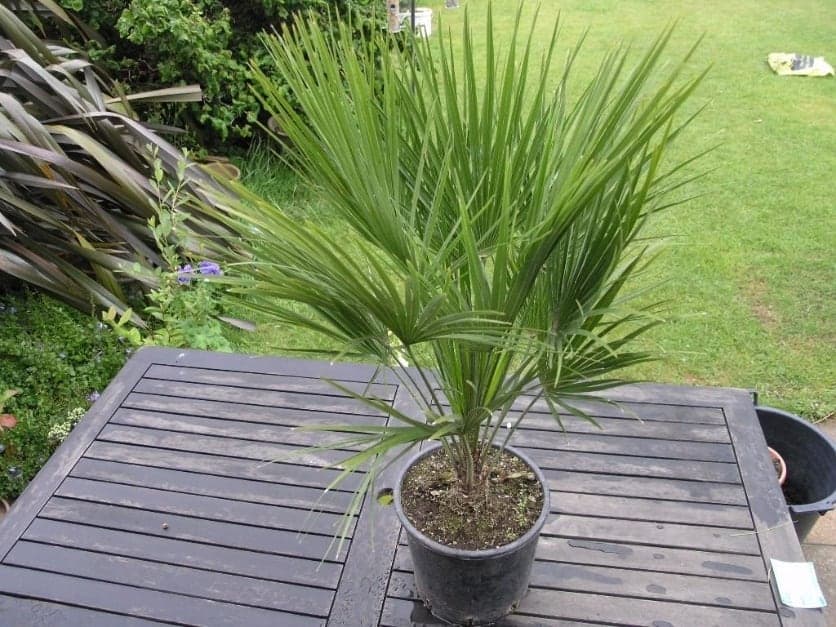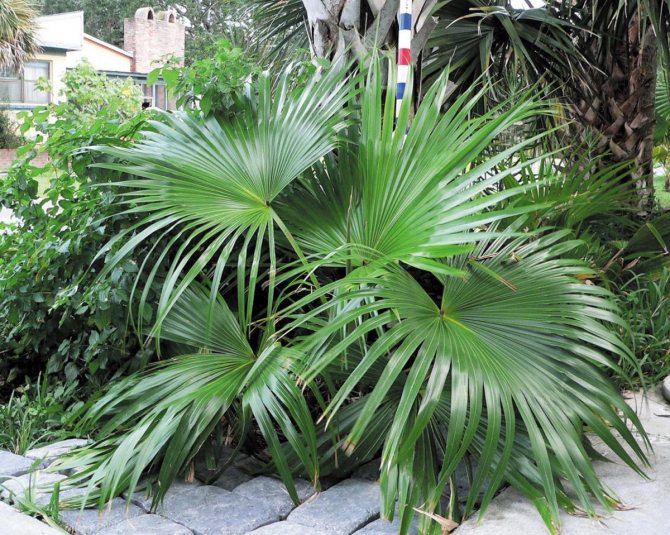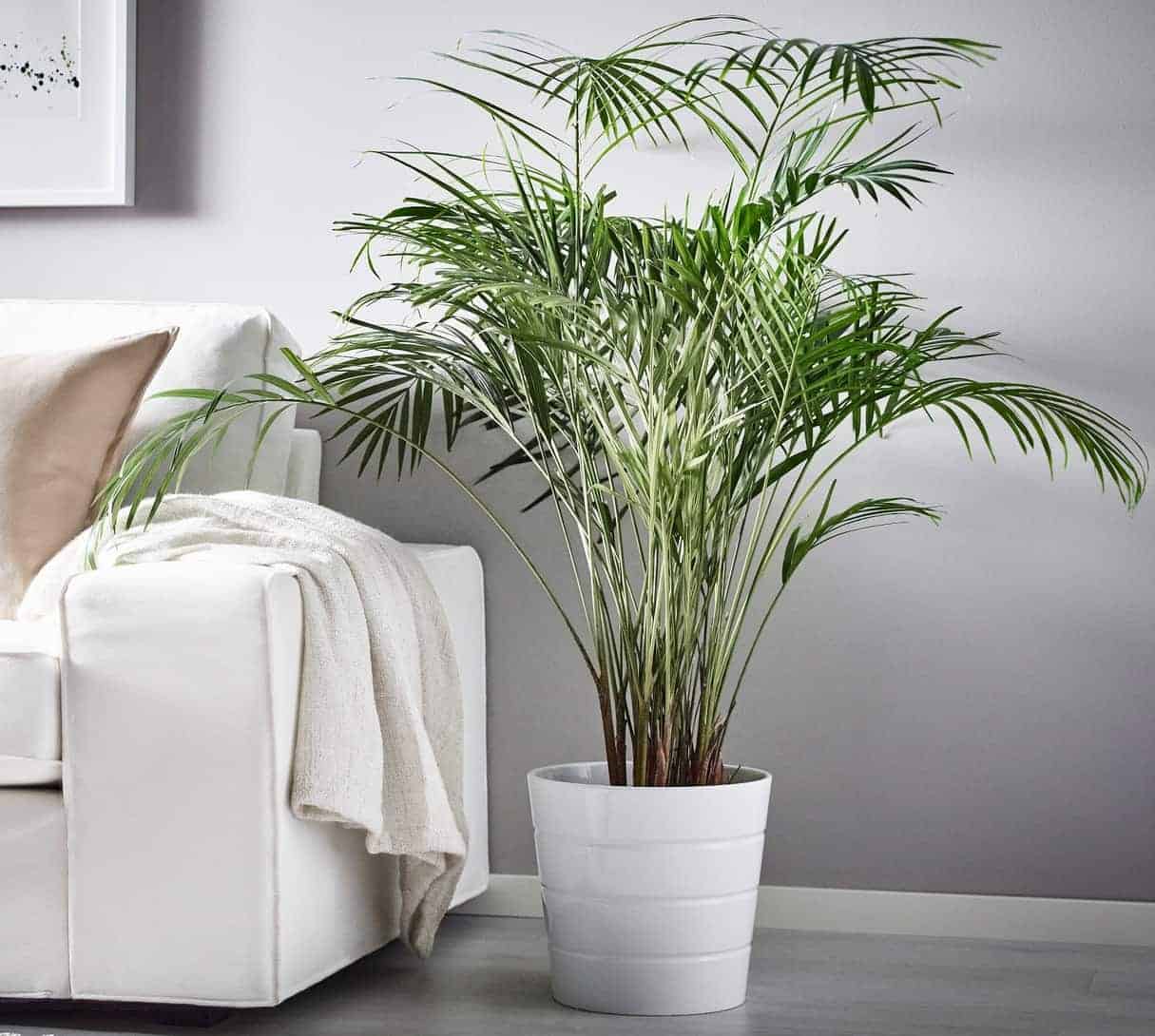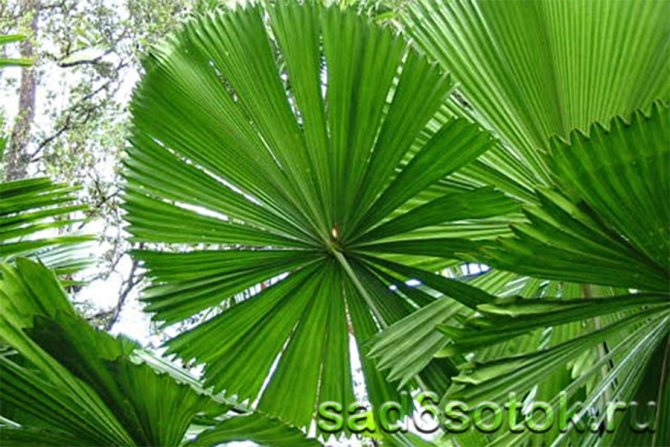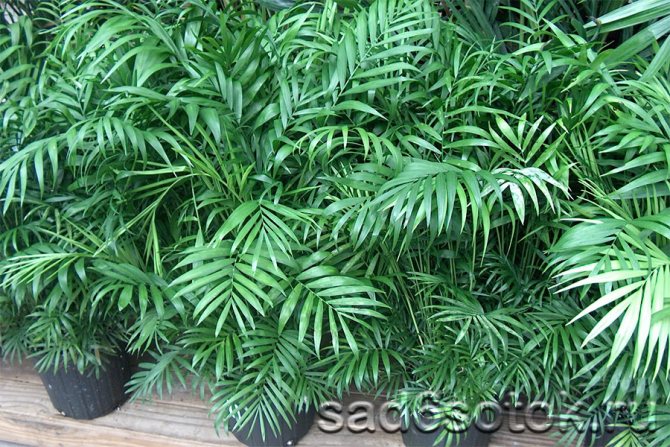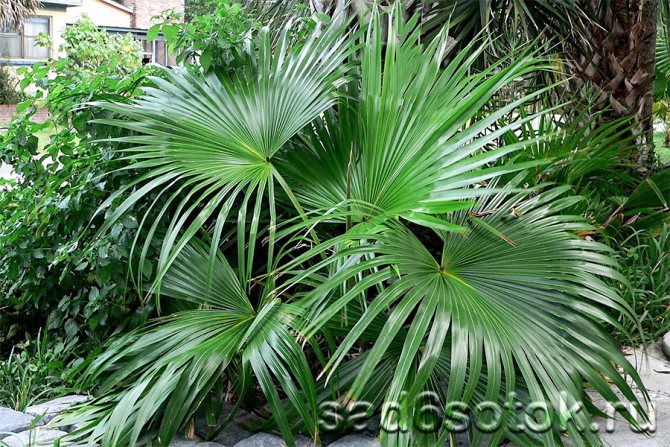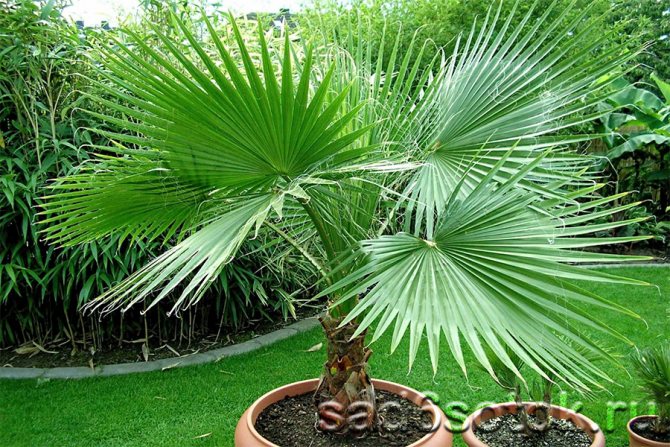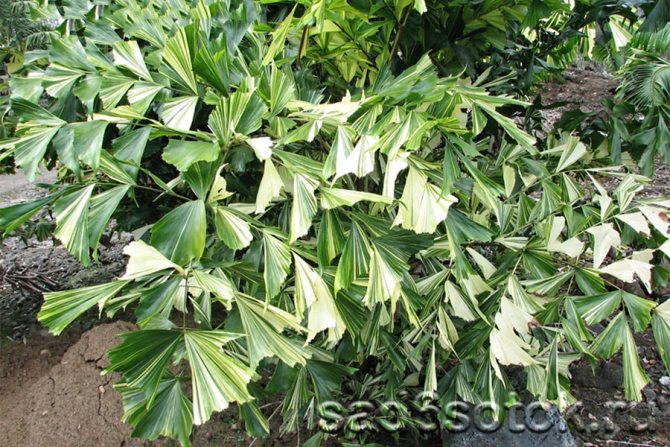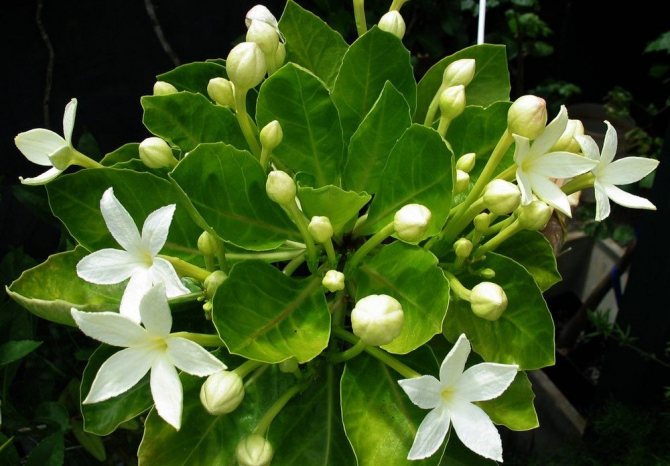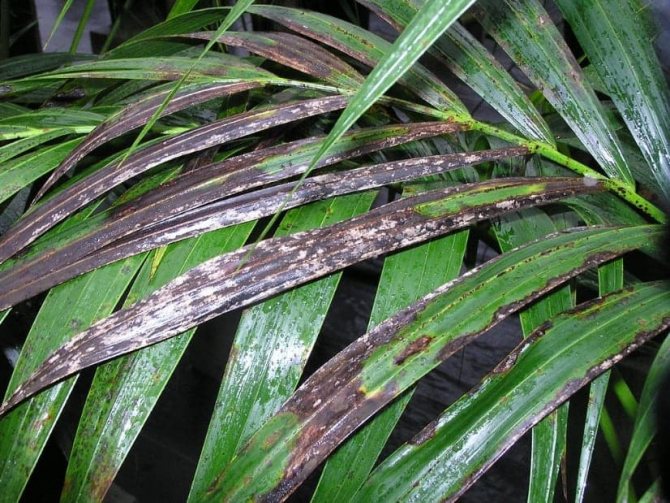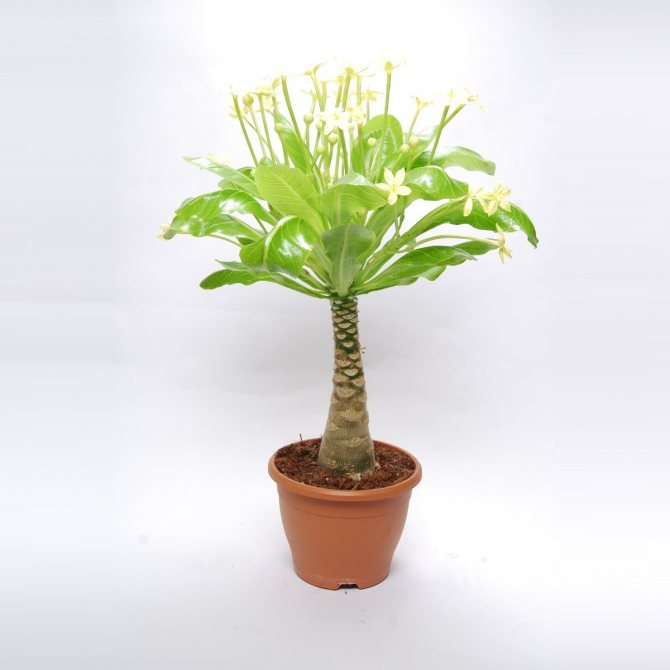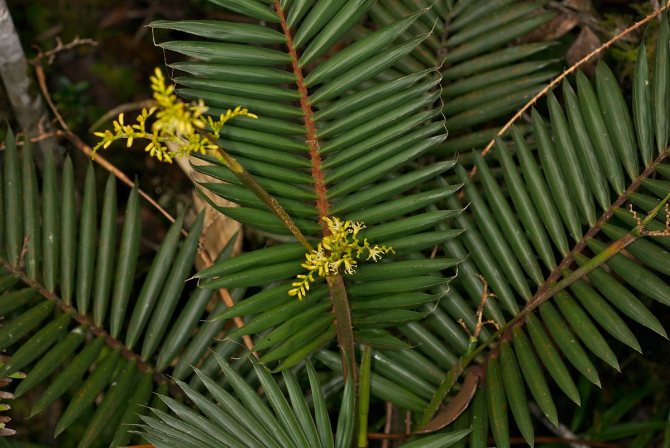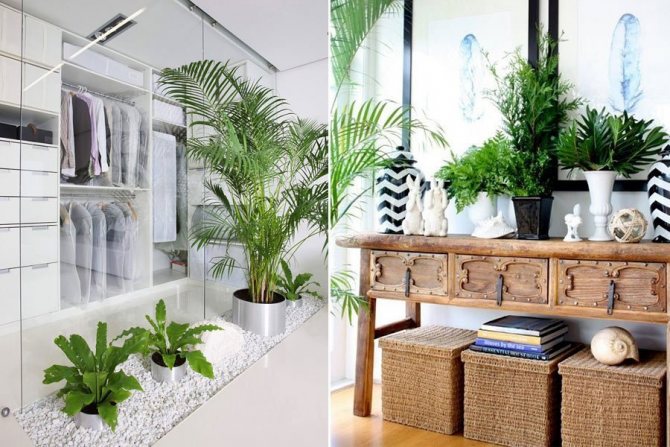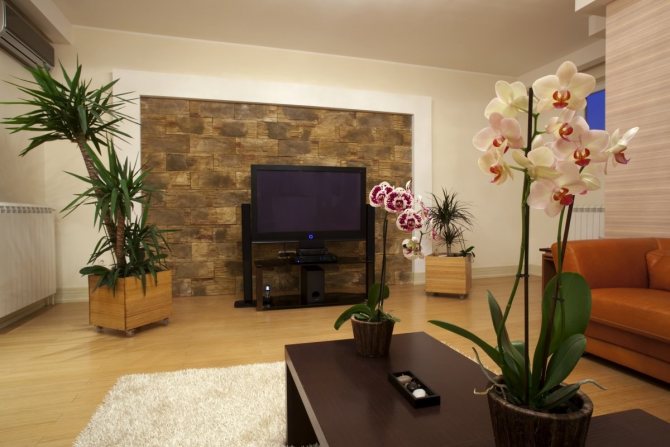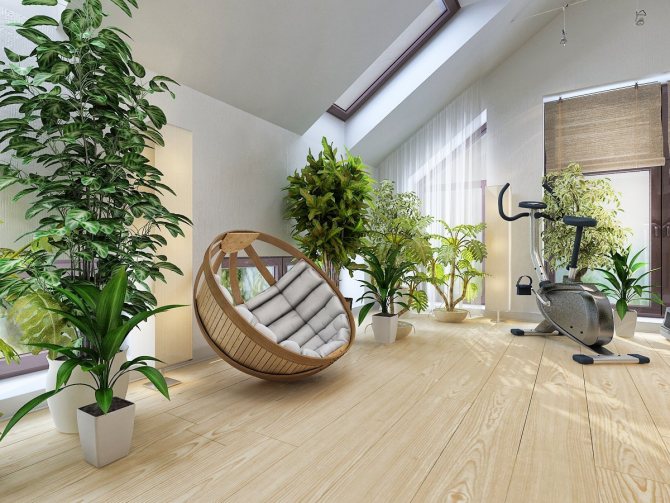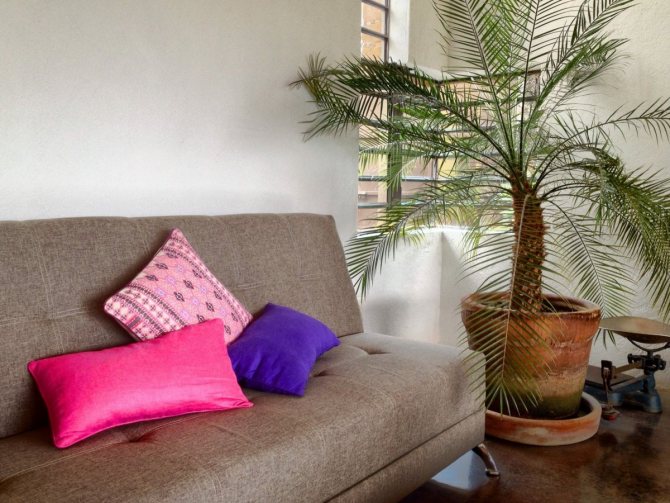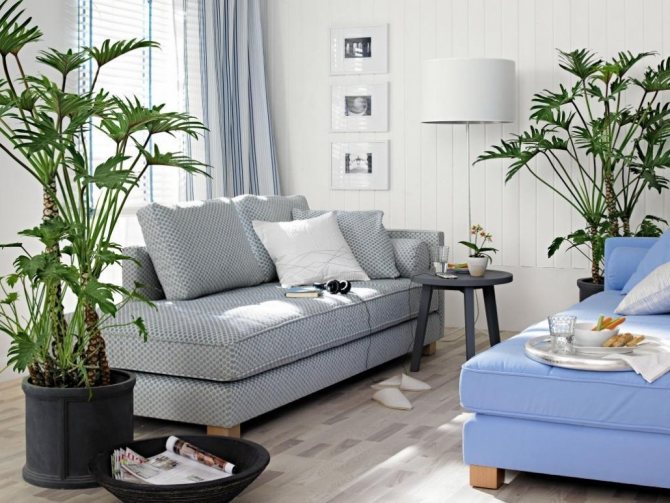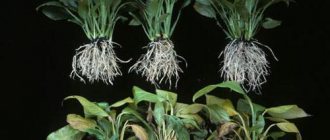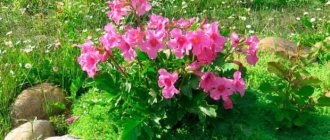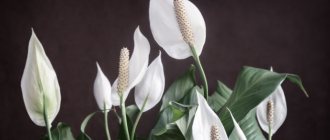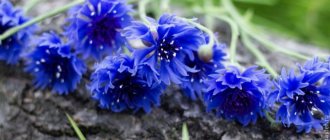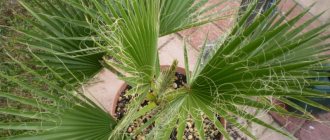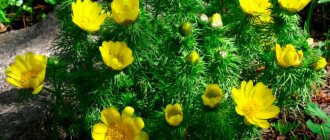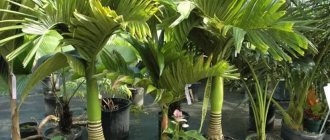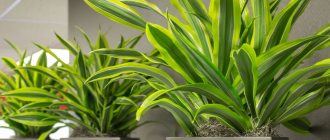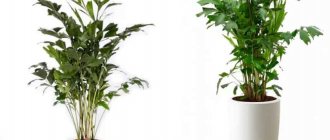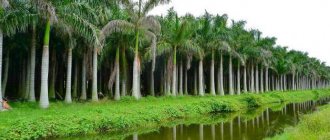Indoor palms play an important role in interior design. They are different in height, crown color and leaf shape. Many need special growing conditions, but there are palms that are not a hassle to care for at home.
Types of palm trees
The Palm family, or Arecaceae (Palmaceae, or Arecaceae), includes 185 genera, in which there are approximately 3400 species of woody perennial plants, most of them with unbranched trunks, but there are exceptions, for example, hyphaene (Hyphaene), or dum- palm, as well as climbing rattan palms, vines from the genus Calamus (Calamus).
Some palms have no trunk, only spreading leaves grow from the root collar. Depending on their structure, all plants of the family are divided into two groups - fan palms and feathery ones.
There are also two groups of plants, which are conventionally called false palms and similar to them. Most of the representatives of these groups have popular names in which the word "palm" appears, for example, banana, snake, euphorbia, screw, bottle, Madagascar, cat palm and others.
About signs of disease in the domestic palm tree
Below are the main signs that your pet is “sick”. Start sounding the alarm if you notice at least one of them.
- The tips of the leaves of the plant can dry out (and the leaves themselves turn yellow) if there is insufficient watering or too dry air.
- If the room temperature, for one reason or another, seems too low for a particular type of palm tree, then it will cease to have enough nutrients and, therefore, it will completely stop growing. In this case, you need to re-inquire about a specialist (for example, a florist who sold a palm tree), which temperature will be optimal for your particular variety of palm. In addition, it is also advisable to feed her.
- If the light is too bright or direct sunlight falls on the plant, then the palm tree, especially the young one, will begin to dry out.
- In the case of highly waterlogged soil, "rusty" spots will form on the leaves of the plant. Moreover, this can happen if the temperature in the room drops sharply or the plant has been watered with too hard water.

If the room temperature for one reason or another seems too low for a particular type of palm, then it will no longer have enough nutrients.
Real palms
Washingtonia (Washingtonia) - this plant got its name in honor of D. Washington, the first American president. However, among the people it is aptly called "underskirt", because its fan foliage, dying off, does not come off the trunk, but hangs in tiers for many years and serves as a shelter for birds, bats and insects. In nature, it grows up to 25-30 m, indoors it is grown as a tub plant and is kept in greenhouses or spacious conservatories. One of the species is especially popular due to the threadlike "curls" that adorn large leaf plates.
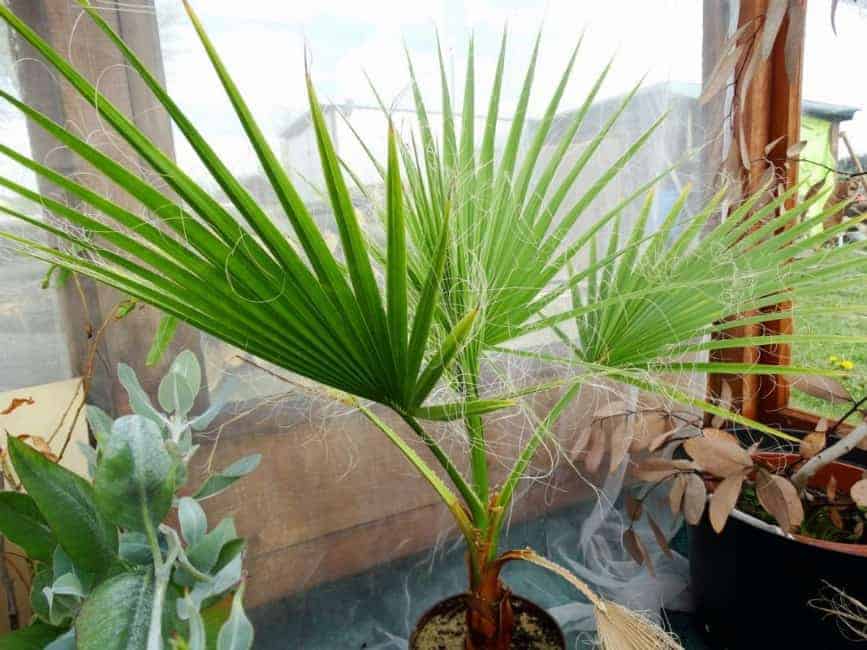

Palm Washingtonia
Livistona - even at an early age, the fan leaves of this palm are incredibly beautiful. At home, it lives up to its "venerable years" due to its unpretentiousness and endurance. Named after P. Murray, a Scottish botanist who lived in Livingstone.A distinctive feature of the palms of the genus is the petioles covered with thorny thorns. In total, there are about 30 species in the genus that live in Australia and New Guinea, as well as in Malaysia and Southeast Asia.
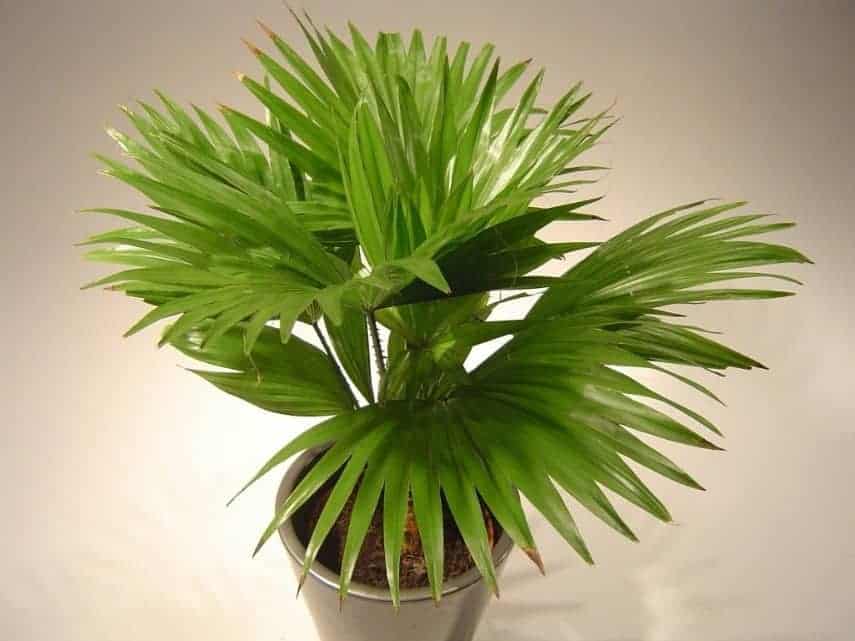

Livistona palm
The coconut palm (Cocos nucifera) is the only member of the Coconut genus. In a normal environment, it grows up to 30 m with a trunk circumference of 60 cm. In room culture, only young plants up to 2.5 m are grown. Large gracefully drooping feathery leaves on the crown of the trunk are collected in a rosette. However, at a young age, the trunk is absent; it begins to form only in 4–6-year-old specimens.
The famous palm nuts are formed only after 10 years of life, and the total duration of its age can reach 100 years.


Coconut tree (Cocos nucifera)
The European palm tree Chamaerops is a typical plant for parks and gardens in the south of France, Italy and Spain, ideal for growing in urban apartments in temperate latitudes, as it develops slowly and is characterized by a low growth of the "bush". It is characterized by deeply dissected fan-shaped leaves attached to elongated petioles, convex on the outside and evenly covered with thick light spines. There is only one species in the genus, which grows in the natural environment to a height of 4–6 m.
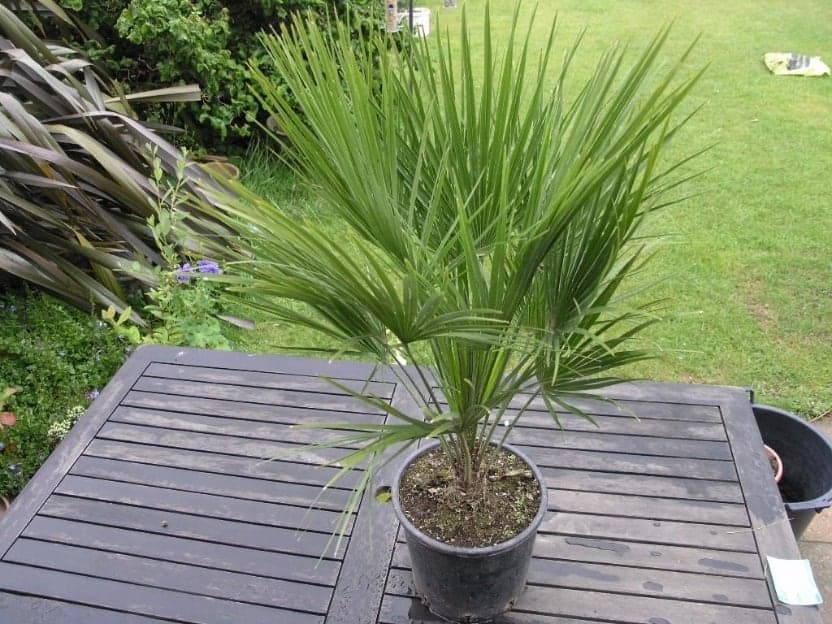

Palm Hamerops (Chamaerops)
Umbrella palm Licuala is an extensive genus, including more than 100 species of low-growing plants, which rarely reach two-meter growth in indoor culture. Distributed in rainy tropical thickets of Southeast Asia, Northern Australia and Vanuatu. Among the licual, there are both multi-stemmed and single-stemmed trees no more than 3–5 m high. It is easily recognizable by the large pleated, almost round leaves that resemble Chinese fans, from which beautiful hats are made in Thailand.
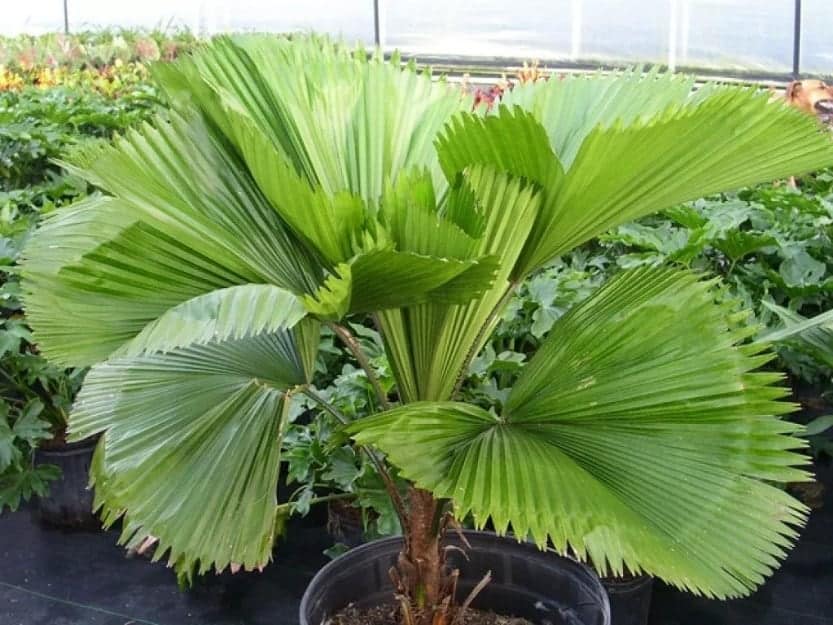

Palm-umbrella Licuala
The date palm (Phoenix) is a genus of about 20 species of large palm trees about 30 m high with three-meter fan-shaped leaves. It grows in the harshest conditions of the deserts of North Africa, Asia Minor and the Arabian Peninsula, but only in those places where groundwater rises close to the surface of the earth. For the Arabs, it is a plant and a home, and food, and all life. They build houses from tree trunks, cover their roofs with leaves, stuff pillows and mattresses, weave baskets and mats, use wood as fuel.
The nutritional value of the fruit cannot be overestimated - they are eaten, horses, camels and dogs are fed, wine and sugar are produced from the juice.
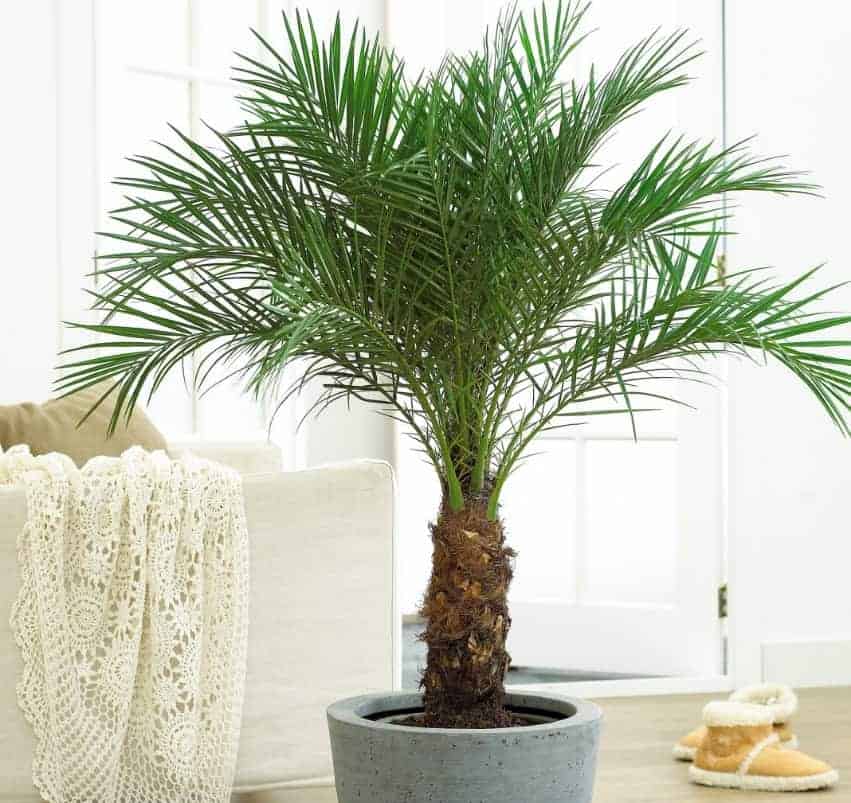

Date palm (Phoenix)
Howea is one of the most popular indoor palm trees native to the Pacific island of Lord Howe off the coast of Australia. Only two types of hovey are known, and both are intensively used in indoor floriculture for landscaping interiors. In one of them, the petioles of feathery leaves are gracefully curved, in the second they grow vertically. The trunk is straight and bare, with visible traces of fallen leaves.
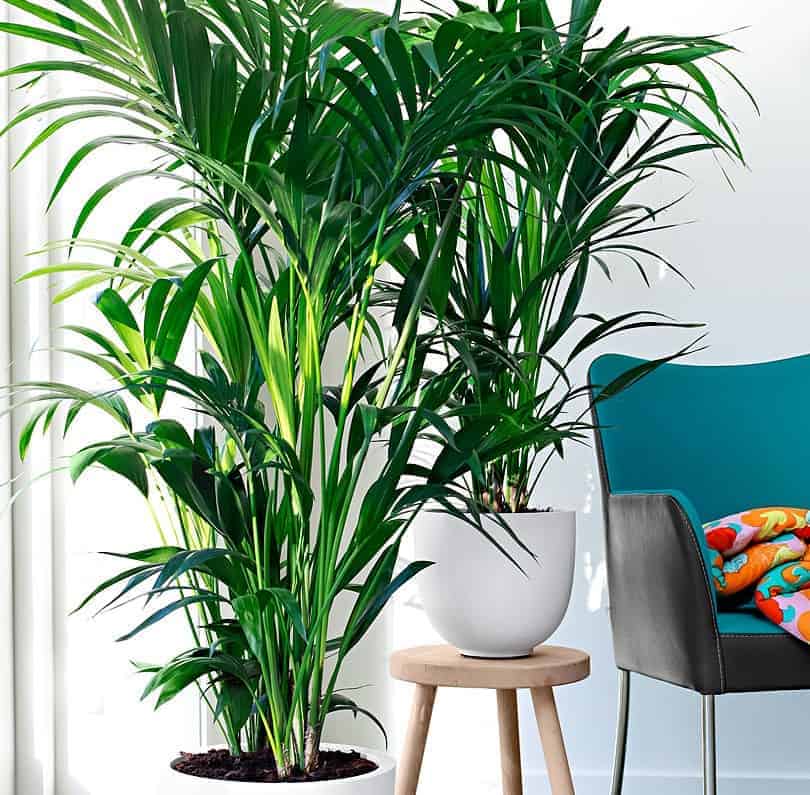

Howea
The Chamaedorea reed palm is one of the most popular home-grown palms with delicate feathery leaves. It blooms willingly in apartment conditions, even at an early age. Forms an inflorescence of small yellow flowers, similar to the flowering of silver acacia, which is popularly called mimosa. Female flowers, unlike male flowers, smell very nice. More than 100 species are known in the genus, but only a few of them are grown indoors.
Most of the hamedorei are low, and sometimes even dwarf, woody plants, sometimes with multiple stems that form shrub thickets, and some species are creeping vines.
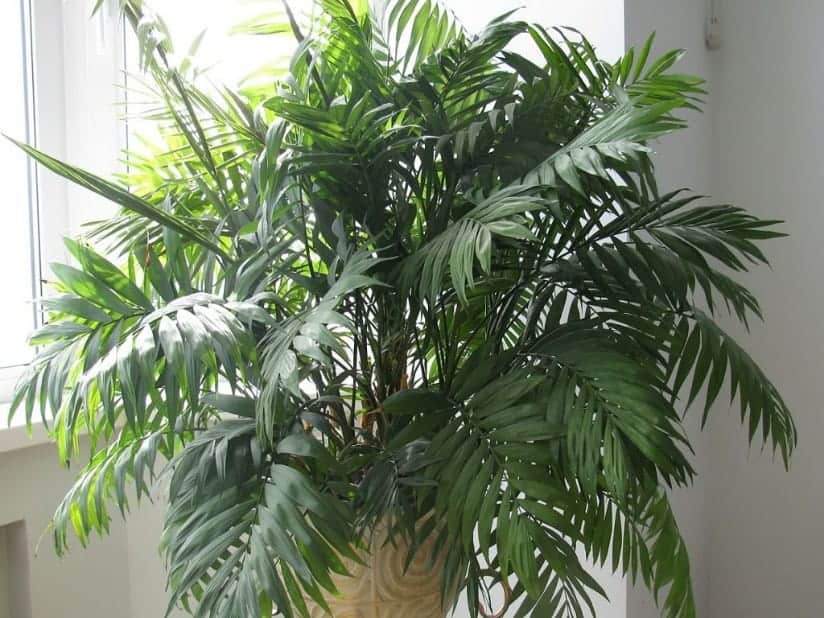

Hamedorea palm (Chamaedorea)
Bamboo palm Rapis (Rhapis) is a genus of 10 small fan-leaved palms native to the southern regions of Japan, China and the island of Sumatra.Thin bamboo-like stems no more than 3–4 m high, covered with felt filaments, branch out with a dwarf shrub at the base. More than its other relatives, it tolerates shading. Several species are known in cultivation, one of them - Rhapis excelsa - is registered by NASA as one of the best plants for removing toxins from the surrounding air.
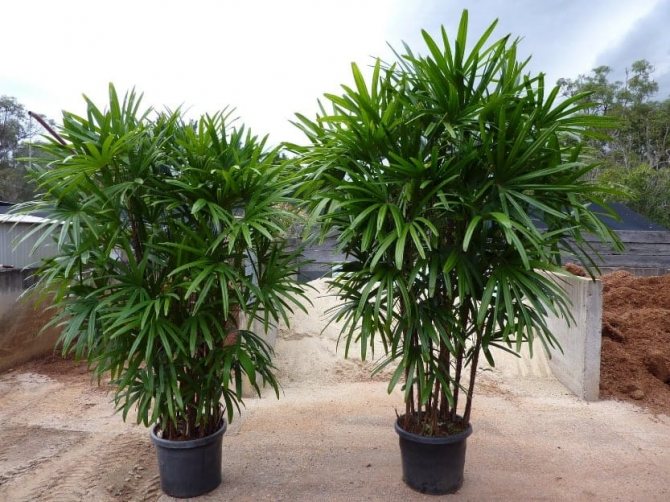

Bamboo Palm Rapis
The Jubaea elephant palm - only one member of the genus occurs naturally at altitudes up to 1200 m off the coast of Chile. It bears the name of Yuba II, the king of Mauretania, who was engaged in botanical research and even left a book about milkweed. The height of the palm tree is within 15-18 m, the trunk diameter is about 1 m. The crown of 60-100 feathery leaves crowns its crown. It is also grown in other countries, it is considered one of the frost-resistant palms, since it can withstand short-term drops in temperatures up to 20 degrees below zero.


Jubaea elephant palm
Butia - there are about 20 species of palm trees in the genus named after the Earl of Bute - Scottish nobleman D. Stewart, who was fond of botanical research. The homeland of plants is Uruguay and Brazil. Most of them are large, slowly developing trees with a powerful grayish trunk and tough feathery foliage with thorns at the base of long petioles.
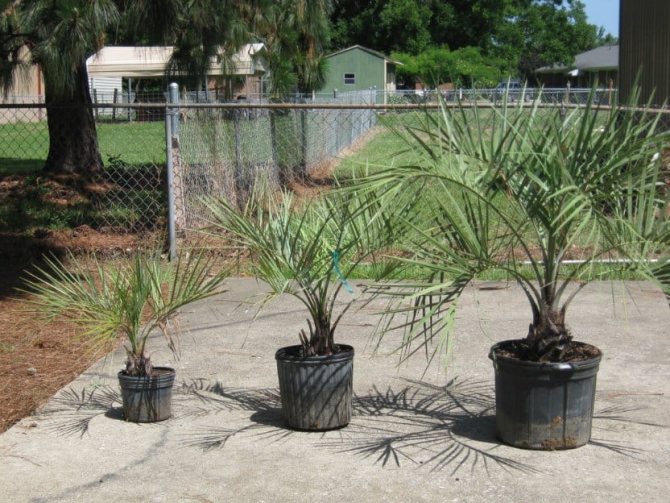

Butia
Brahea (Brahea) - named after the astronomer from Denmark T. Brahe. There are 11 species in the genus, but only two of them are known in culture. Home to tall trees with a trunk of 12-15 m are the arid mountain regions of Mexico and Central America, including Honduras, Guatemala and El Salvador, as well as the island of Guadeloupe. Two types of bracheas grow on the Black Sea coast of the Caucasus.
The fan-shaped leaves are parallel to the line of the smooth or slightly thorny petiole, without bending. In nature, it forms long, up to 5 m, inflorescences of yellowish-green flowers, in the place of which fleshy spherical fruits are formed.
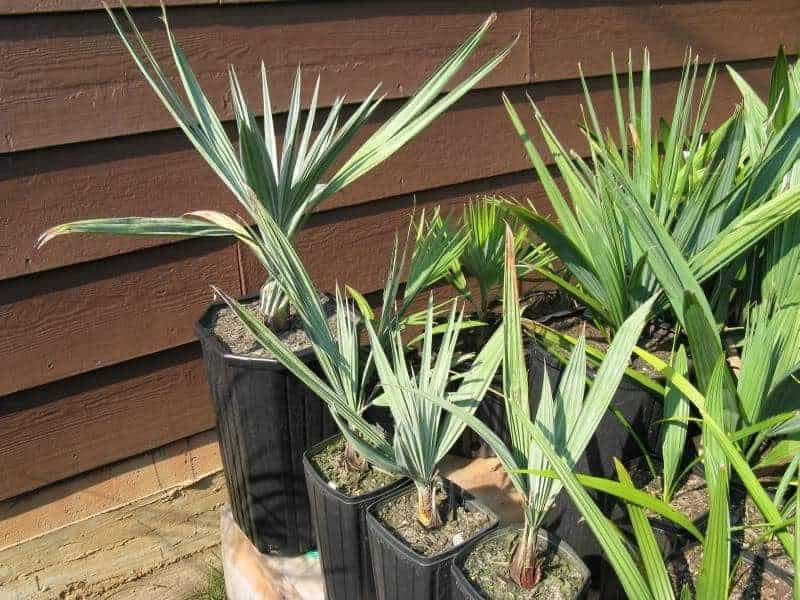

Brahea
Areca (Areca) is a type genus of the Palm family, consisting of 45 species that grow in the rainy forest thickets of tropical Asia - in the Philippine and Solomon Islands, as well as in India, Sri Lanka, and New Guinea. This genus includes very different plants, even a species with a height of only 35 cm is found. Their stems, as a rule, are solitary with a tuft of chic pinnately dissected leaves. Inflorescences are cobs with female flowers located in the lower part of them, and male ones, closing the apex.
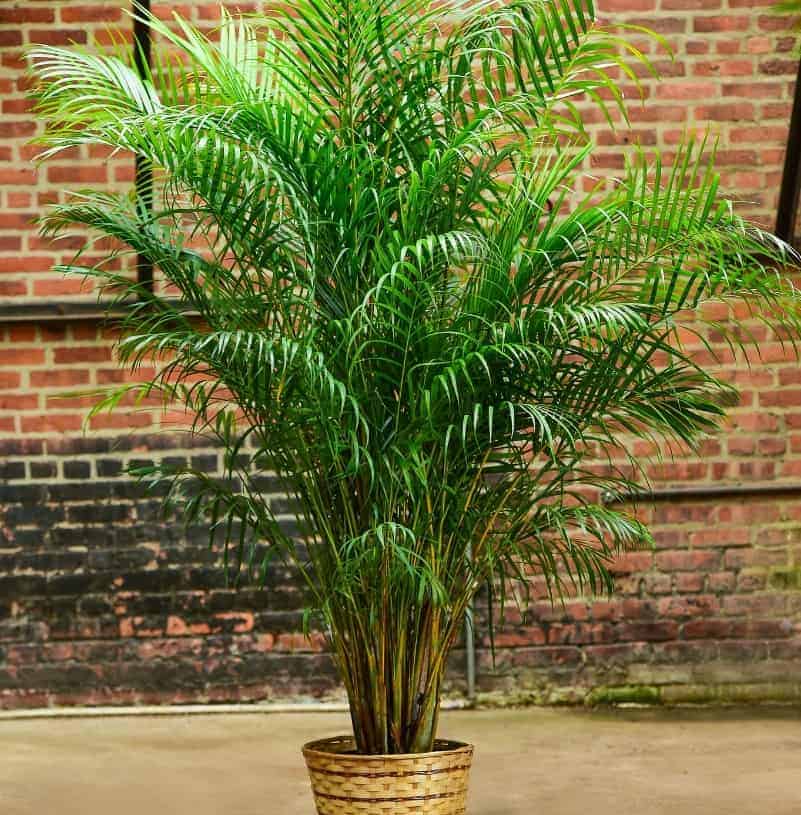

Palm Areca
Betel palm, or Areca catechu, is a tall tree from the genus Areca, growing in nature up to 30 m, with a trunk 25-50 cm in diameter. Distributed in the southern outskirts of China, in most regions of South and Southeast Asia, in East Africa and Western Oceania Islands. Leaves are complex-pinnate, with pointed lobes 30-60 cm long.
In adult specimens, no more than 8–12 leaves are formed. Creamy whitish flowers, both male and female, are collected on the cob. Inside the orange or reddish fruit the size of a hen's egg, seeds ripen, called "betel nut," with seeds containing alkaloids that can induce a mild narcotic state.
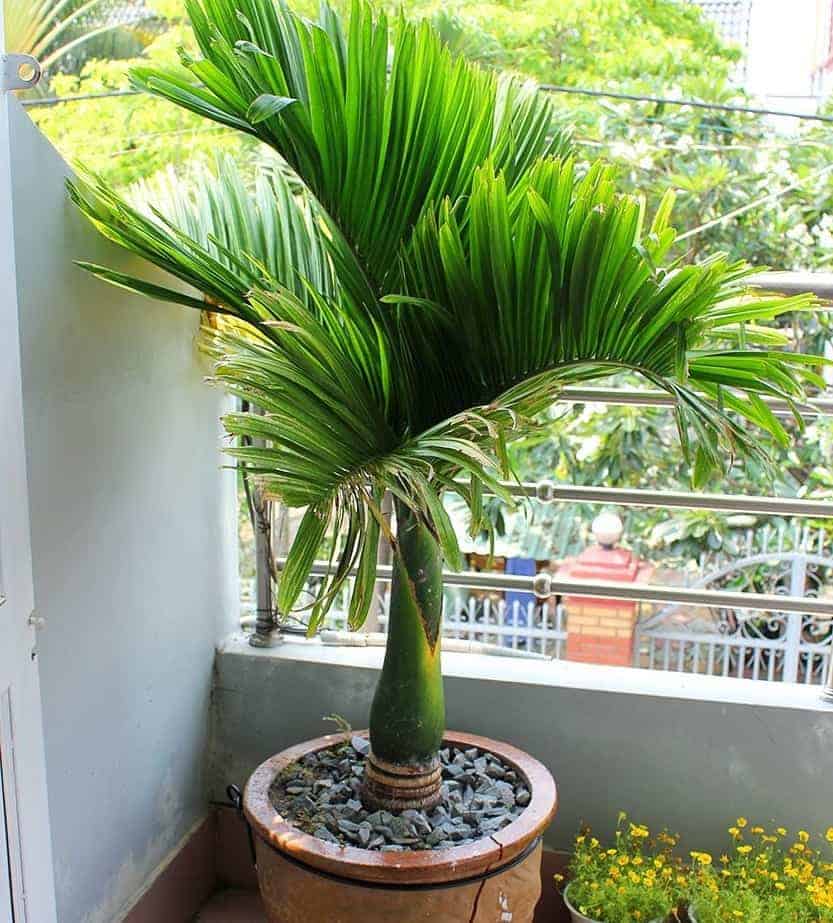

Betel palm
Chrysalidocarpus, or Dipsis (Chrysalidocarpus, or Dypsis) - single-stemmed or multi-stem bushy trees no more than 9 m high in nature, growing on the island of Madagascar. Most of the 20 species are endemic. A rare plant in cultivation, but it multiplies easily due to the many root suckers and good seed germination.
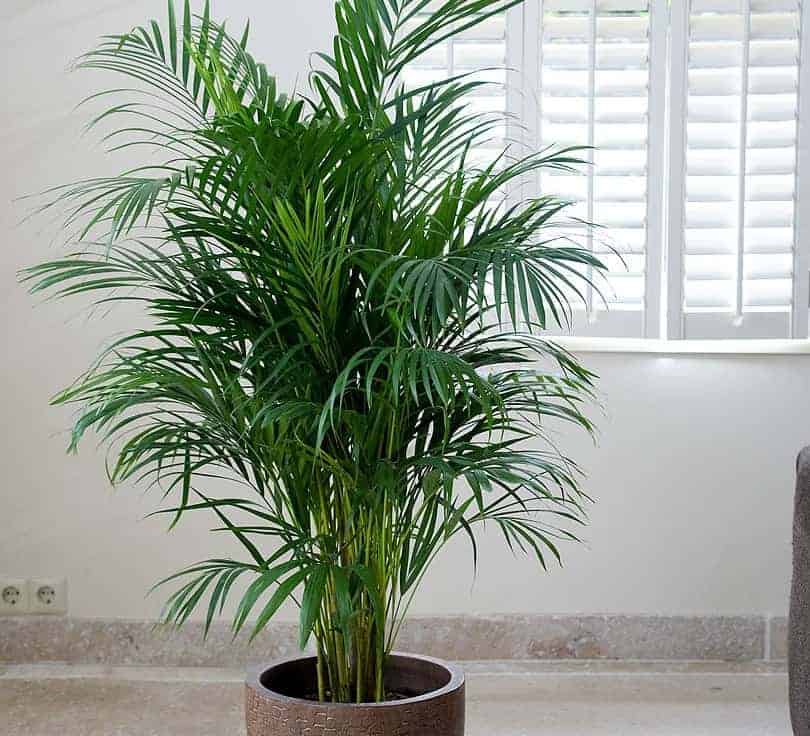

Chrysalidocarpus
Palm fishtail Caryota is a colorful plant that cannot be confused with other representatives of the Palm family. They say that the famous Swedish botanist Karl Linnaeus identified him only from a small fragment of a leaf sent by one of the travelers.
The characteristic "torn" edges of the leaf blades are a distinctive feature of all 12 types of karyotes that grow in natural conditions in Southeast Asia, Indochina, India and on the islands of the Malay Archipelago.
Some of them are trees 7-9 m or 10-15 m high with several trunks and leaves 2.7-6 m long, but there are also single-stemmed species.In nature, they form inflorescences-laces on which fruits are formed, the size and color of our cherries.


Palm fishtail karyota
Metroxylon (Metroxylon) - monocarpic palms, common in nature on the coast and islands of Southeast Asia. The genus includes 7 species, represented by single-stemmed trees from 8 to 18 m in height with large paired-pinnate leaves up to 7 m long. All plants in the genus are classified as sago palms, sago, a valuable food product containing starch, is extracted from the core of their trunks.
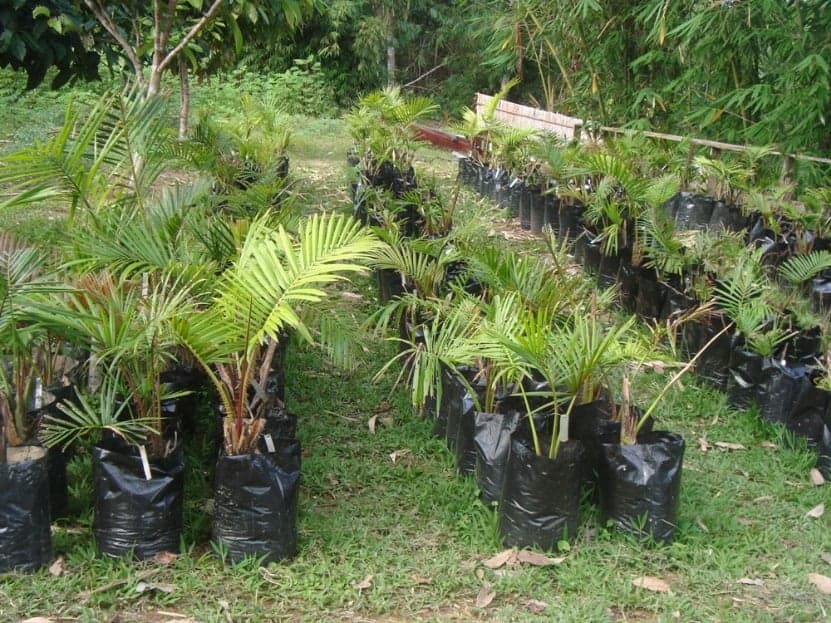

Metroxilon
The real sago palm (Metroxylon sagu) is a type of palm trees from the genus Metroxylon, living on the shores of the islands of New Guinea, Fiji, Molukskie, as well as in Malaysia and Indonesia. Most are plants about 9 m high and with a trunk circumference of 30–35 cm with large foliage about 7 m long, attached to grooved petioles densely studded with thorns.
They bear fruit only once in a lifetime, and then die. Starch-sago, obtained from the trunk, is used by local peoples to prepare pancakes - the main food of the islanders.
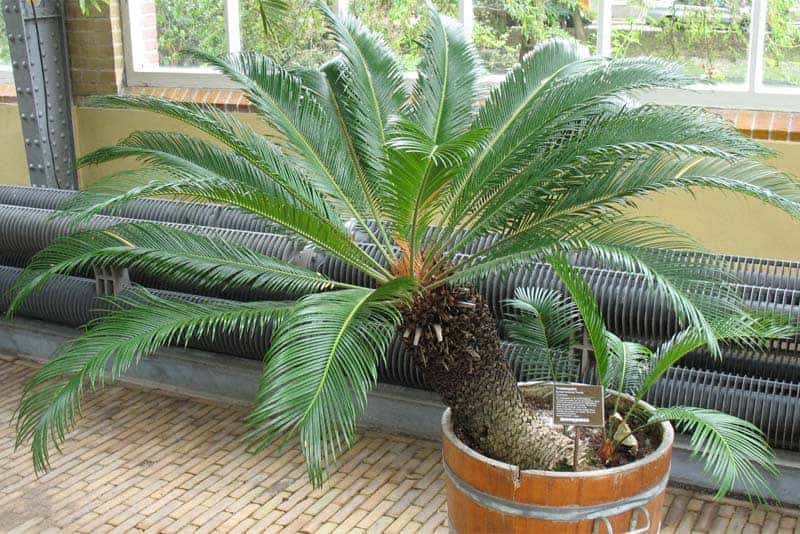

The sago palm is real
The bottle palm Hyophorbe is a genus of 5 species from the islands of Mauritius, Rodriguez and Reunion. All palms of this genus grow no more than 6 m in nature and are distinguished by a characteristic thickening of the trunk in the lower part, which is why they received such a popular name. One of the species is known from a single specimen in nature, which has a very unstable trunk and is on the verge of complete extinction.
Indoors, the type of bottle palm tree Gioforb Vershaffelt is grown - a colorful plant with a smooth trunk and 8-10 feathery leaves at the top.
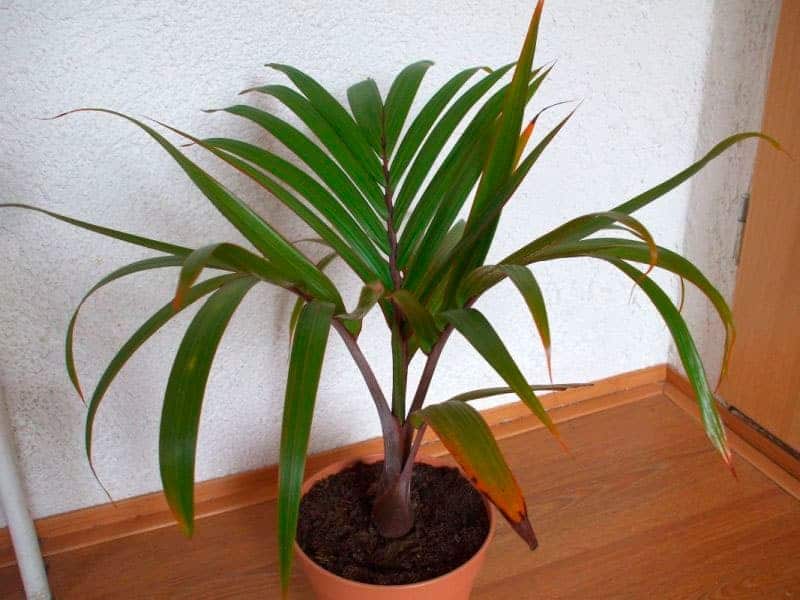

Bottle palm of Gioforb Vershaffelt
Trachycarpus (Trachycarpus) - unpretentious palms, naturally reaching a height of 12 m, common in the humid subtropics of China, Burma and Japan. Their distinctive feature is a tough, fibrous brownish coating that wraps around the trunk. Fan-shaped deeply dissected leaves are located on the top of the trunk.
There are 9 types of trees in the genus, among them those grown at home do not exceed 2-2.5 m. Some representatives of the genus are frost-resistant and can withstand a decrease in ambient temperature to 12-14 degrees below zero.
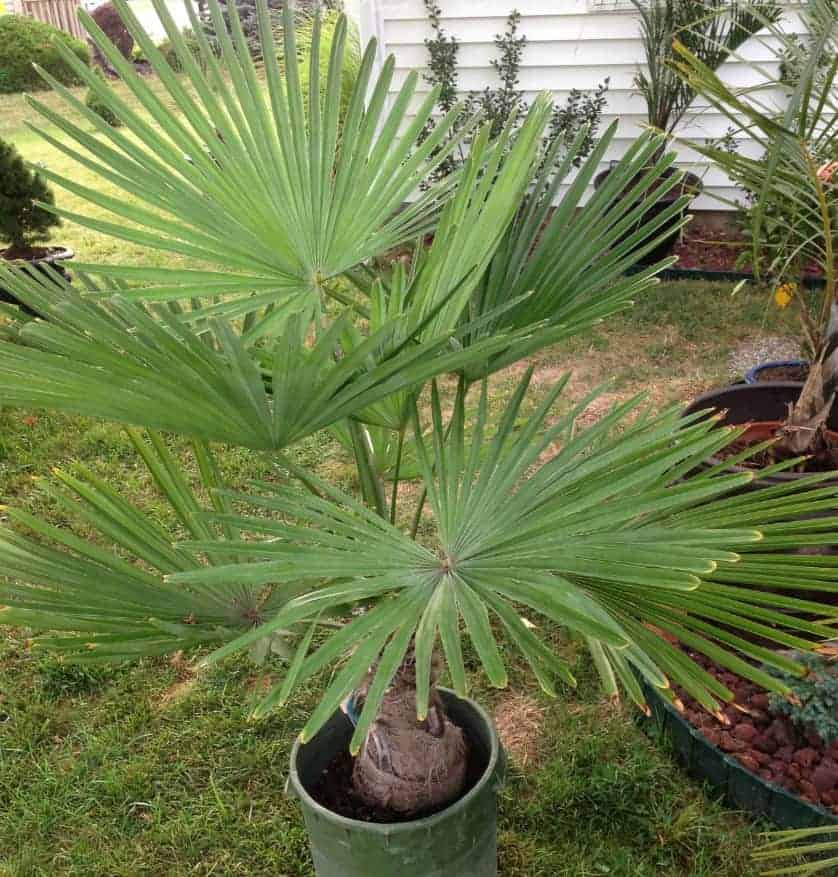

Trachycarpus
Soil selection
The potting mix is very large in stores. But as practice shows, it is better to use it as a basis.
Palm trees love moisture and breathable, loose soil. And also had a sufficient amount of nutrients and the pH should be in the range of 6.3-6.5. That is, so that the soil is neutral and slightly acidic.
- Recipe 1. Sand, garden soil, humus 1: 2: 1.
- Recipe 2. Low-lying peat, sand, dolomite flour, mineral fertilizer.
False palms
False palms include such a plant form, which is characterized by a bare vertical stem and a rosette of narrow belt-like or narrow-linear leaves at the crown. Outwardly, there is a great similarity with a palm tree, but these plants do not belong to the Arecaceae, or Palm family, but are representatives of other families - Pandanovaceae, Agave, Asparagus.
Yucca (Yucca) - garden or houseplant from the Agave family. The flower grown in the open field has a rosette of hard, belt-like leaves, from the center of which, at the beginning of summer, a tall peduncle is formed with many drooping bell-shaped flowers of white or pink color. Indoor yuccas for the most part have a woody trunk, occasionally branched, on the top of which narrow linear-lanceolate leaves are collected. The flowers are large, bell-shaped, snow-white, forming a numerous panicle. There are 20 species in the genus, distributed in the southern United States and in Central American countries.
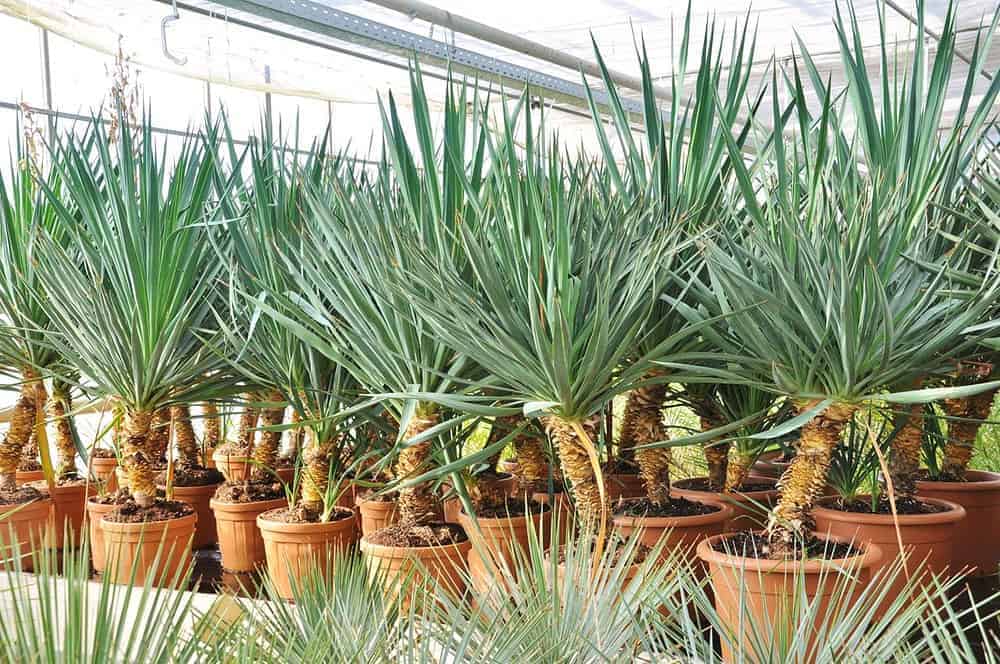

Indoor Yucca
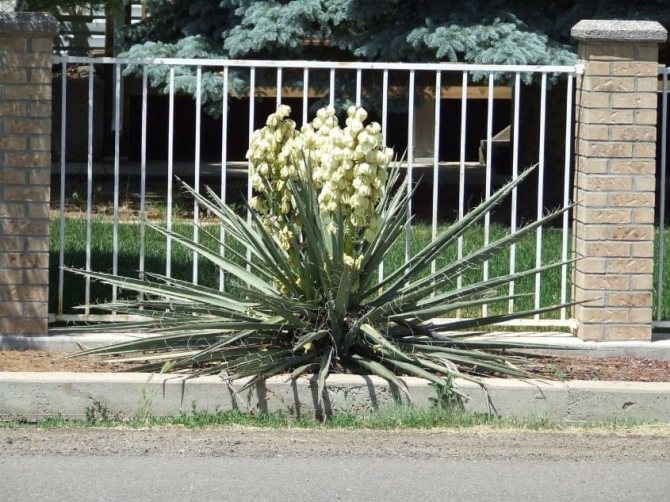

Garden Yucca
Dracaena (Dracaena) is a genus of arboreal or shrub succulents from the Asparagus family, including, according to various sources, from 40 to 150 species that live mainly in Africa. Only a few species grow in the southern regions of Asia and only one in the tropical zone of Central America.
Like palm trees, dracaena has a single or branched trunk, to which narrow leaves with longitudinal veins converging to a pointed top are evenly attached along the entire length. At home, it blooms extremely rarely. Small whitish-green flowers in all species, with the exception of one, smell unpleasant.
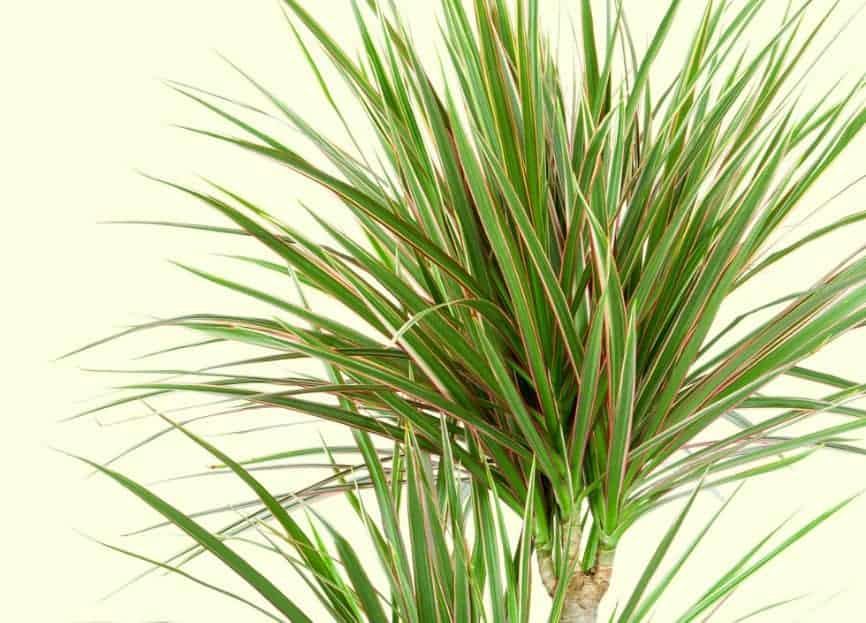

Room Dracaena


Dracaena
Spiral palm Pandanus (Pandanus) - almost 750 species of tree-like plants of the Pandanovaceae family, which live mainly in the tropical latitudes of the Eastern Hemisphere, are ranked among the pandanas. In Madagascar alone, there are about 90 species of them. Their trunks are branched and long, sometimes they grow more than 10-15 m, reaching a maximum of 25 m. Adventure roots are formed along the woody pagons, which save the plant at the time of a strong hurricane wind. The leaf blades can grow to a length of 4 m and a width of only 11–15 cm, arranged spirally on the trunk in 2–4 tiers. Inflorescences are ears or panicles.
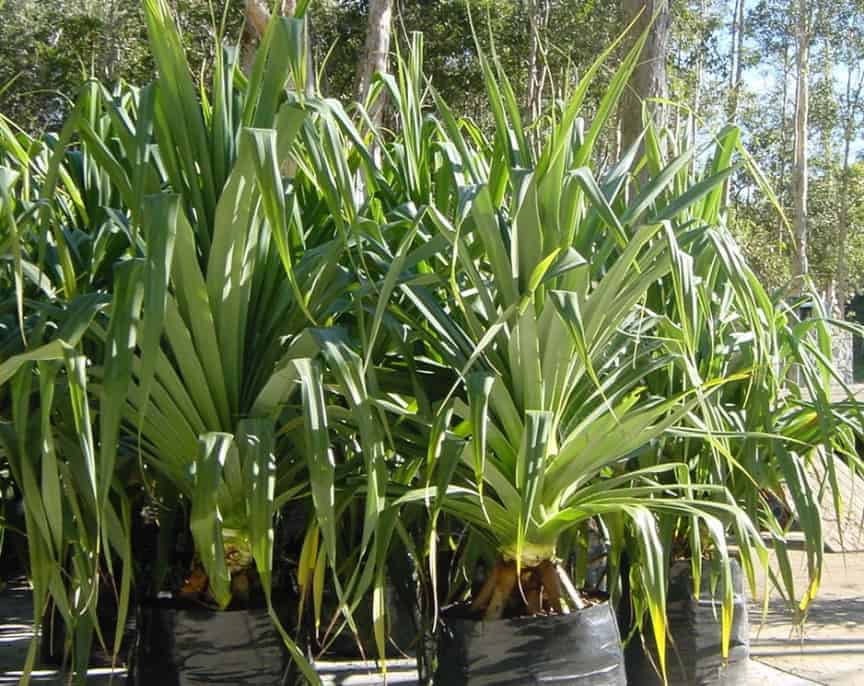

Pandanus
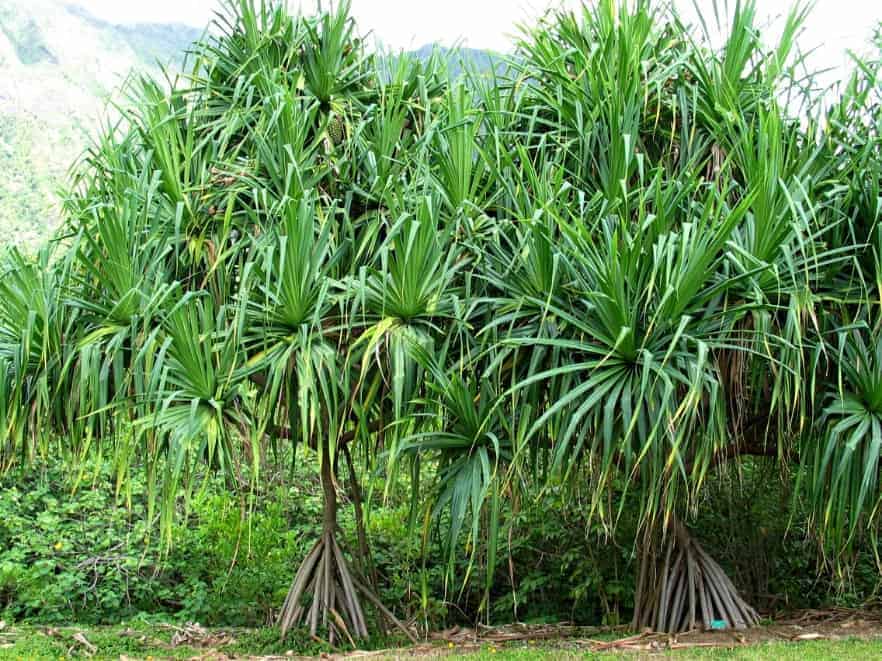

Pandanus
Cordilina (Cordyline) is a small genus of 26 species in the Asparagus family. Its representatives live in the subtropics and tropics of the American, Asian and Australian continents. Among them there are trees and shrubs with fleshy tuberous roots. The foliage is colorful, with cream or pale pink stripes. The leaf blades are elongated-lanceolate, belt-shaped. Small flowers of scarlet, snow-white, lilac color are collected in a panicle.
Adult specimens resemble dracaena, the difference is that the root cut of the latter is orange-coral, and that of cordilin is usually white. They are also distinguished by leaf veins - parallel in dracaena, in cordilina they clearly branch off from one central center of the leaf.
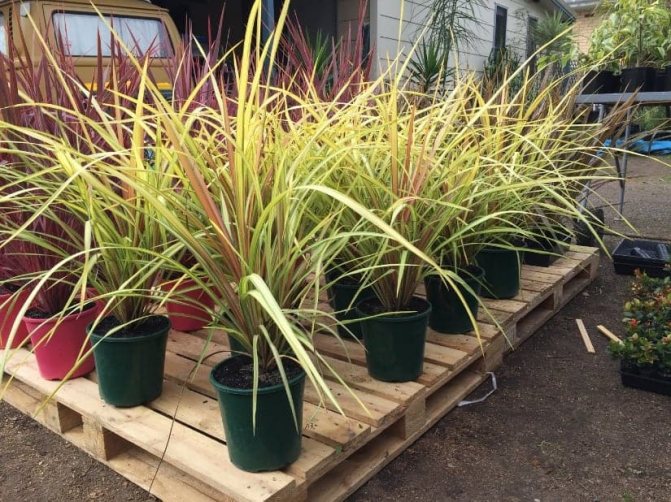

Cordilina
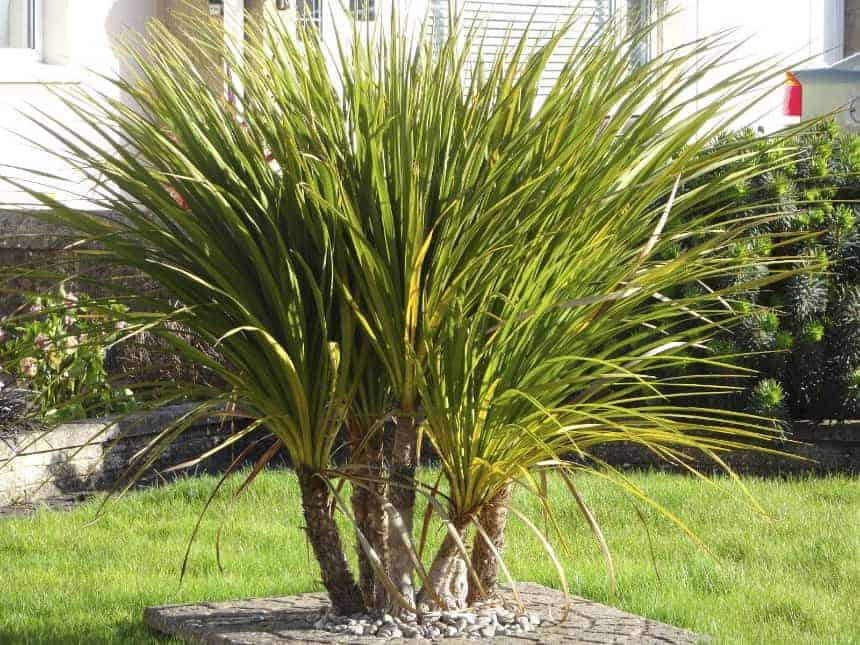

Cordilina
About pests
In some pseudoscientific notes, you can find the following statement: if the air is too dry, then the house palm will become a victim of a spider mite. This, excuse the expression, is nonsense. The pests either already exist, or they do not exist at all. Each parasite has its own favorable conditions for development, and there are also not favorable ones. But in fact, and in another case, it develops - everyone wants to live. So that:
- study the plant carefully before bringing it into the house;
- make a kind of quarantine for the plant;
- do not bring home plants from tourist trips - they are pests anyway.
Pest control is very expensive and sometimes dangerous to your health, but if it doesn't scare you, then don't rest!
As a result, I would like to note that this fabulous tropical plant is very unpretentious to care for. Moreover, it grows rather slowly, due to which it can stand in a room for over ten years. Of course, if the owner knows how to properly care for a palm tree.
Also read about how to grow mushrooms in your garden bed.
Palm-like plants
The group of plants similar to a palm tree includes species that only vaguely resemble the appearance of representatives of the Arecaceae family. Often these are herbaceous plants or succulents, there is a shrub with fruits that taste identical to dates, but only the folk imagination ranked them as palms.
Hawaiian palm Brighamia is a perennial succulent from the Bellflower family, endemic to the Hawaiian archipelago. A short-lived plant that is on the verge of extinction - only a few specimens remained in nature under protection in the Na Pali Coast National Park, located on the island of Kauai.
The plant has a thick, not branched stem, reaching a height of 1–2 m, less often 5 m. On its crown there is a rosette of fleshy, spoon-shaped leaves.It blooms in autumn with fragrant, funnel-shaped flowers of lemon or cream shade, forming an inflorescence of 3-8 pieces.
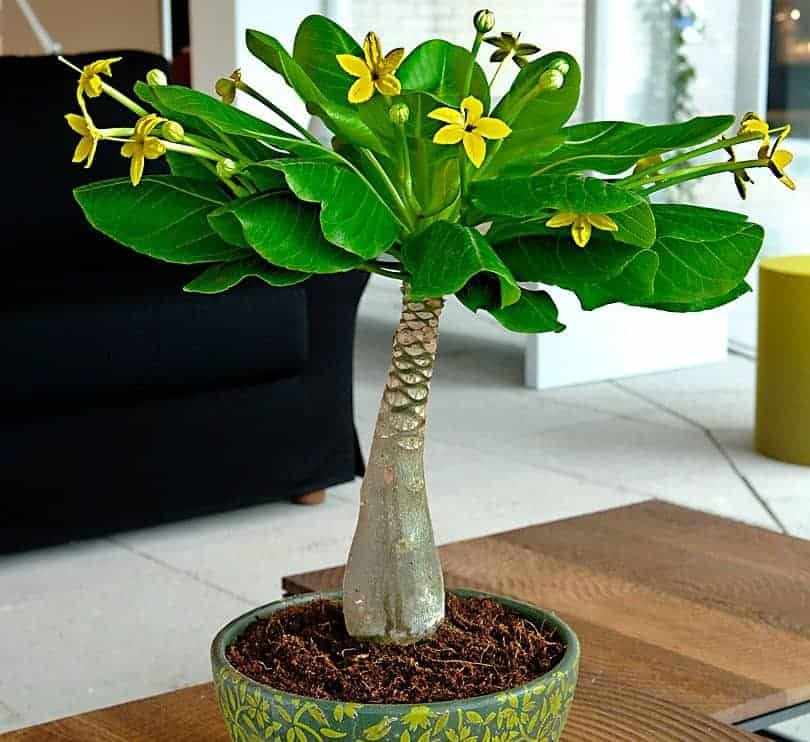

Brigamia Hawaiian Palm
Panama palm Carludovica (Carludovica) is a low palm-like plant from the Cyclantoid family - only 4 species in the genus, common in the tropical latitudes of America. Named after the Spanish monarch Charles IV. Leaves on long petioles, beautiful fan-shaped, three-or five-dissected. Flowers resemble glomeruli on a cylindrical ear, fruits are tetrahedral berries.
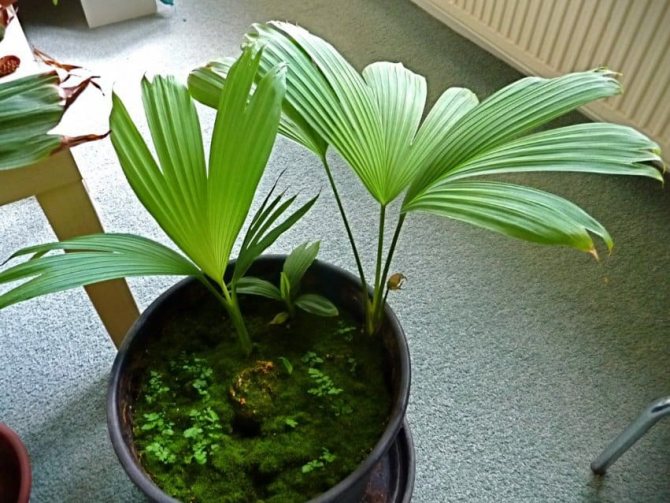

Panama palm tree Karlyudovik
Banana palm Banana (Musa) is a herb of the Banana family, which grows up to 7 m in nature. Distributed in Southeast Asia, but mostly on the islands of the Malay Archipelago. The genus includes up to 70 species of large grasses, which are often mistaken for trees, with a powerful root system and a very short trunk that practically does not protrude above the soil surface. What many take for the trunk are actually tight-fitting leaf sheaths - large, oval, soft.
When the plant is about to bloom, a long peduncle forms inside this false stem, raising up a brush with male and female flowers of purple or greenish color.
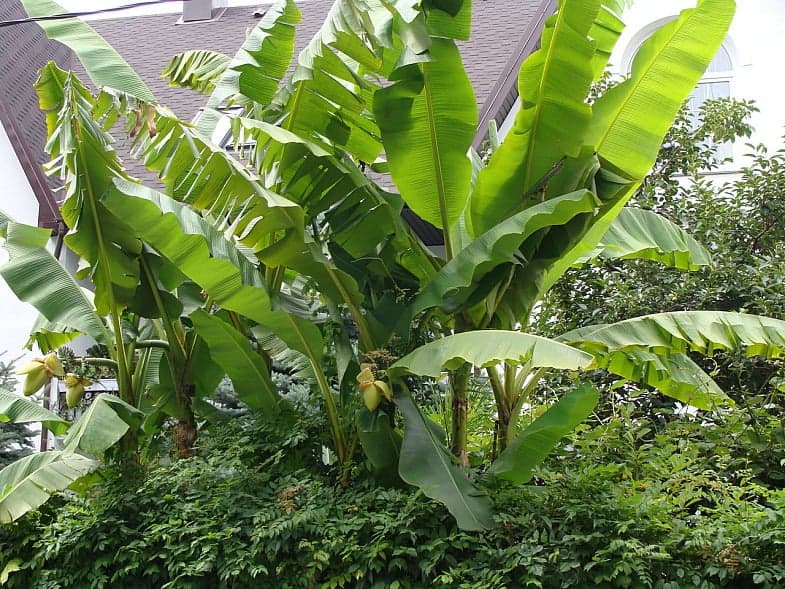

Banana palm banana
Castor bean palm (Ricinus) - the only herbaceous plant in the genus, castor bean plant belongs to the Euphorbia family. In temperate latitudes, it is considered a medicinal, oil-bearing and ornamental annual crop, in tropical regions it grows as an evergreen shrub. Presumably comes from Ethiopia, and spread throughout the world. In some countries it has been grown for over 4 thousand years.
The stems are hollow, growing vertically, and have a different shade - purple, reddish-burgundy, pink or almost black. The leaves are huge, sometimes up to 80 cm across, of a beautiful maple-like shape on long petioles. The flowers in the axillary inflorescences are small and inconspicuous, but the prickly fruit pods with oval seeds inside look rather exotic.


Castor bean palm
Snake palm Amorphophallus is a tuberous plant from the Aroid family. The genus consists of 170 species found in West Africa and the Pacific Islands. One of the species is the owner of the largest inflorescence in the plant world with a height of 2.5 m with the most unpleasant smell of rotten fish and spoiled eggs.
It grows from an underground turnip tuber, throwing out only one tripartite leaf, very rarely - 2-3. The inflorescence is an elongated ear, wrapped in a blanket, white-green outside, crimson or purple inside.


Snake palm amorphophallus
Unabi Chinese date, or real Ziziphus (Ziziphus jujuba) - the species belongs to the genus Ziziphus of the Buck family. A small tree or shrub with thick bark and simple oval leaves. It blooms with inconspicuous miniature light green flowers. The fruit is a very tasty and juicy drupe with a sweet reddish-brown pulp that tastes like dates.
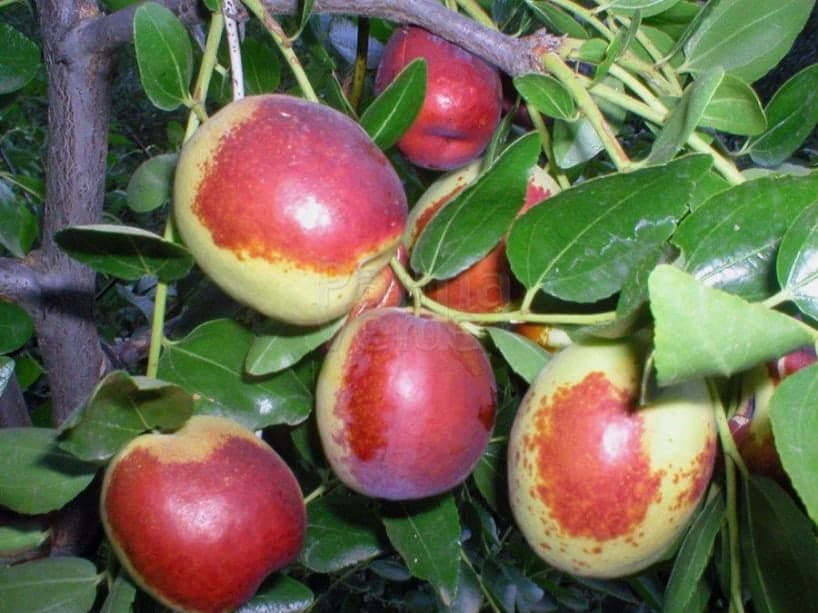

Unabi chinese date
Sago palm Tsikas (Cycas) is a cycad from the genus of the same name, which is the only one in the Cycas family, consisting of 90 species. It lives in Asia, Indonesia, the Pacific Islands, as well as Australia and Madagascar. It is very similar to a palm tree, it grows up to 15 m in height, the trunk is thick in circumference, even with a relatively small growth. Cirrus leaves are concentrated on the top of the trunk in the form of a bunch.
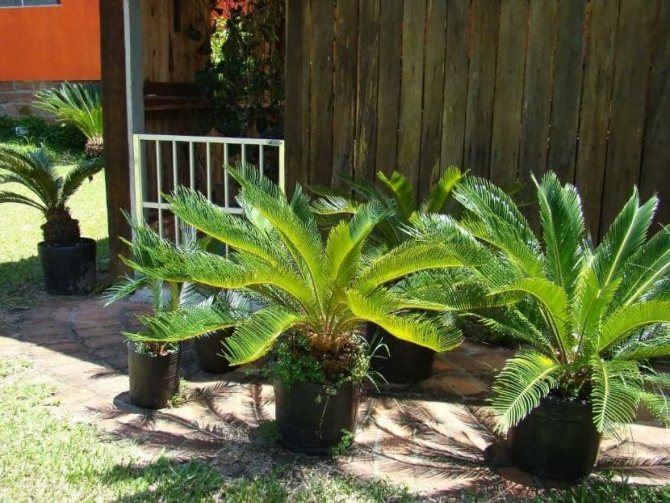

Sago palm Tsikas
The bottle palm Nolina, or Beacarnea, is a tropical plant from the Asparagus family, originating from southern Mexico. The barrel of the nolina is shaped like a bottle. The thickening at the bottom of it serves for the accumulation of moisture and nutrients. At the top, a crest of narrow linear leaves is formed.Due to its exotic species, it is popular in decorative floriculture and is popularly called "horse tail" or "elephant foot".
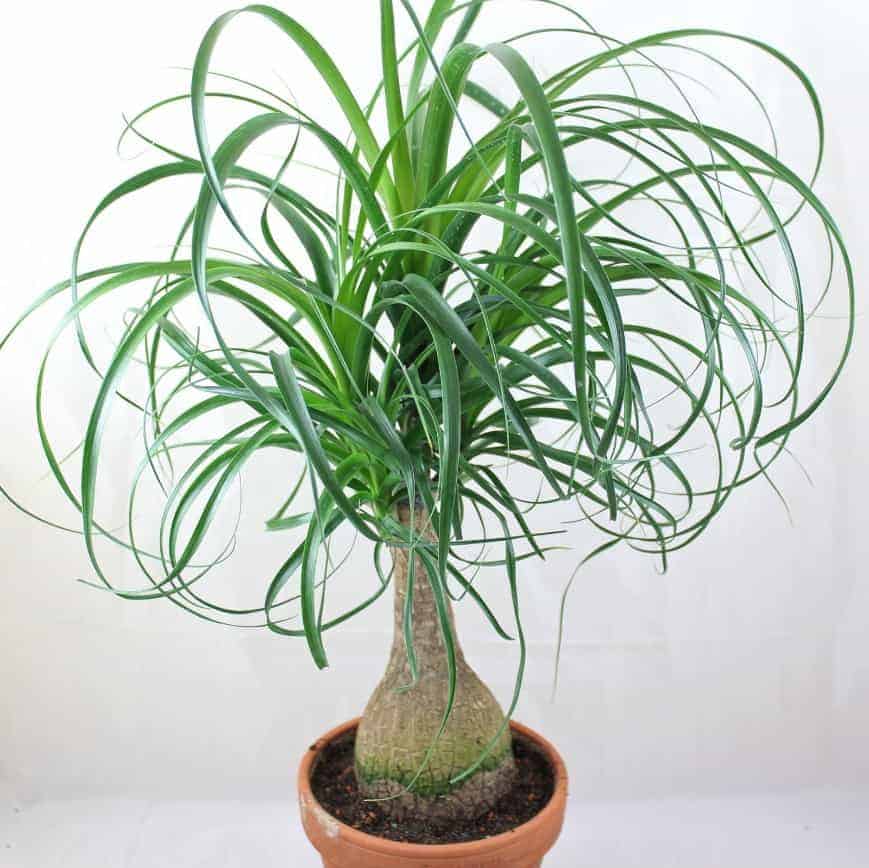

Bottle palm Nolin, or Bocarnea
Madagascar palm Pachypodium lamerei is a species from the genus Pachypodium of the Kutrov family. The plant has a tall, thick, silvery-gray trunk with characteristic thorns, which occasionally branches. The leaves are narrow, with a distinct central vein, forming a rosette at the top.
In the natural environment it grows up to 6 m, but in room conditions it grows slowly and does not reach more than 1.8 m. It blooms reluctantly indoors, and in the garden forms spectacular large snow-white flowers with a pleasant aroma.
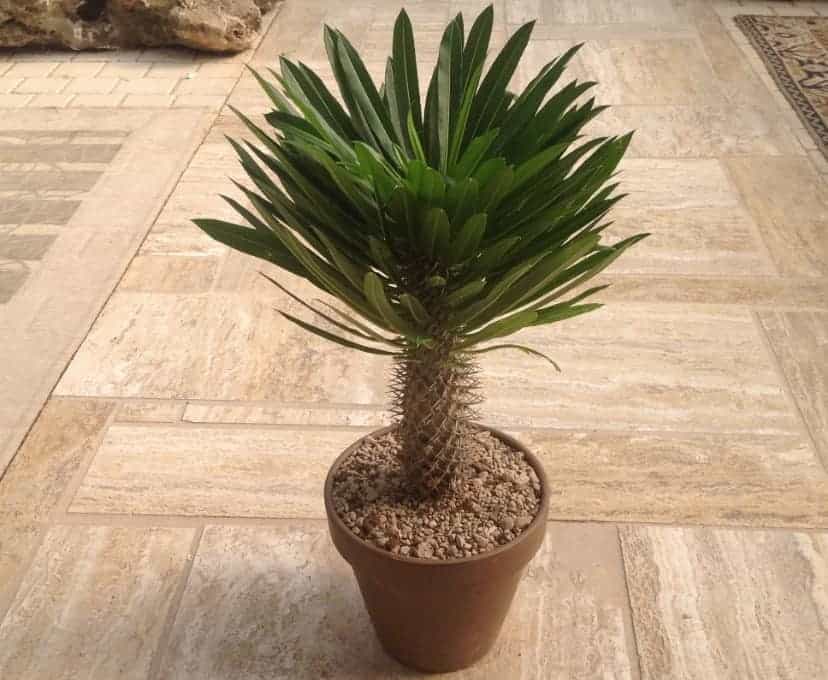

Madagascar Palm Pachypodium Lamera
Euphorbia leuconeura is a plant with a thickened 4 or 5 ribbed trunk and a beautiful rosette of elongated oval leaves 10 to 20 cm long with light veins. The flowers are small, threadlike and very rich in nectar. The three-nest fruit capsule has an unpleasant property - to shoot seeds all over the room. Once in neighboring pots, they germinate beautifully.


Euphorbia palm, or Euphorbia white-veined
Cat palm Cyperus (Cyperus) is a marsh tropical representative of the Sedge family with straight herbaceous stems, crowned with an umbrella-tuft of rigid linear leaves. There are about 700 species in the genus Syt, but several are popular in indoor conditions, especially loved by domestic cats, which is why they received such a popular name.
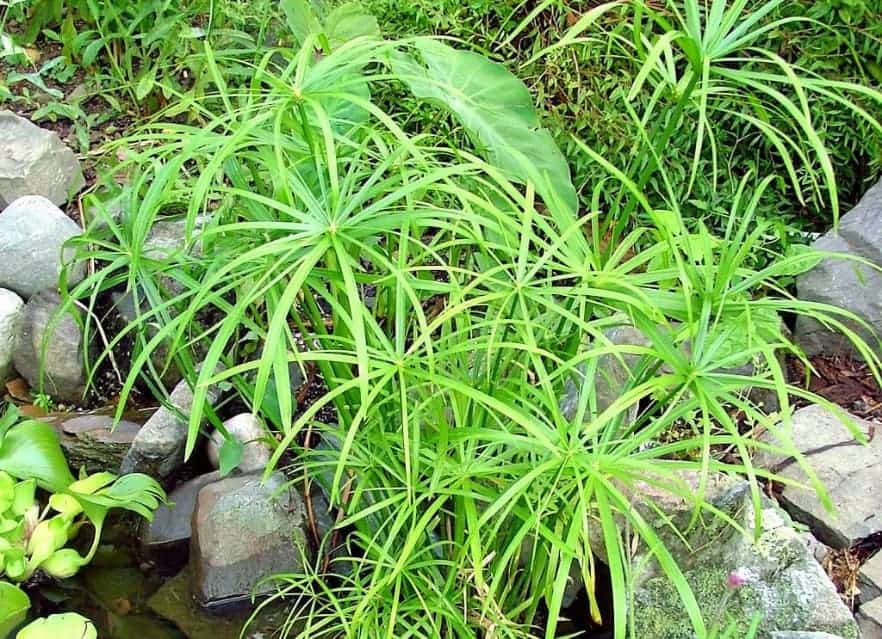

Ciperus cat palm
Reproduction
The seed propagation method is suitable for all types of palms. And some species, for example, Liviston, Trachikarpus, Li-kuala, Washingtonia and Hovea, reproduce exclusively by seeds.
Among the vegetative breeding method, it can be noted:
- Root offspring.
- The tops.
- Shoots.
- Cuttings.
When choosing seeds, it is worth paying for the expiration date. It is desirable that it is not expired. Otherwise, there will be no shoots.
- The seeds are freed from the shell and sent to a damp cloth for swelling. With a thicker shell, you can use a file and file it.
- The substrate is being prepared: sand and garden soil 1: 2.
- The seeds are sown to a depth of 2 cm and the soil is sprayed.
- The container is covered with foil to create a greenhouse effect.
- As soon as the first shoots appear, the container is moved to a bright place.
- When the seedlings begin to interfere with each other, a dive should be made.
- The seedlings are transplanted into separate pots with the same substrate.
- Seedlings are also covered with glass covers.
- As soon as rooting takes place, the cap is removed.
- The plant adapts and stays in the same place for some time.
- Further, as the seedlings grow, they are transplanted into larger pots.
Read also: Why feijoa is useful for the human body
Vegetative propagation
Offspring
If a bush palm, for example, chrysalidocarpus, hamerops, carita, Roblena, dates, hamedorea, then this method is suitable for them. Exceptions are palm species with one trunk.
- The root offspring appears near the root system of the uterine bush. Over time, it takes root and grows on its own.
- Once the offspring is well rooted, it should be separated from the mother bush with a knife.
- Cut the cut with charcoal or ash.
- A young shoot is planted in a permanent place and watered.
- Cover the top with a glass cover for quick rooting.
Tops
In this way, plants that look like palm trees reproduce - yucca, dracaena.
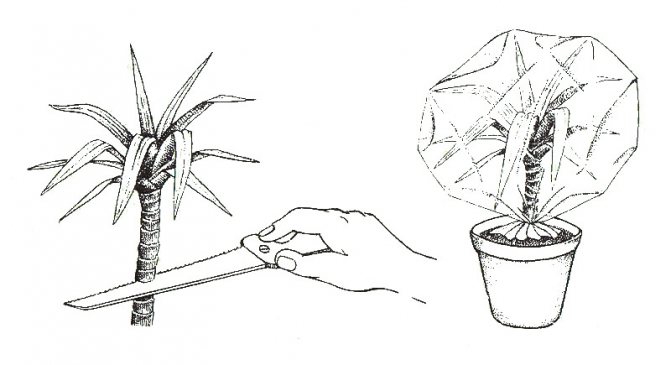

Top propagation
- The soil is prepared: sand, garden soil, humus 1: 2: 1.
- The top of the plant is cut and sent to the ground for rooting. In this case, the stem must be freed from the leaves. The cut site does not need to be processed.
- The method is successfully used by flower growers, since the survival rate here is up to 90%.
- The container is covered with a cap until rooting.
- As soon as young leaves appear, the cap is removed.
- Shoots. The young shoot is carefully cut and placed in the water for rooting.
- When the roots of fathoms appear, they are transplanted to a permanent place.
- The pot is covered with a cap until the shoot takes root.
- Cuttings. The stem is cut off and divided into cuttings of 15 cm. They can be sent to the water for rooting or directly to the substrate.
- A mini-greenhouse is being set up.
- As soon as the cutting takes root, the greenhouse is removed.
Requirements for the maintenance of palm trees
One of the mistakes of placing a palm tree at home is a corner in the apartment that is too brightly lit by the sun's rays. Many believe that since palm trees live in sultry deserts among the sands, it means that they are not afraid of the scorching sun. However, this is an incorrect opinion, because in natural conditions, adult specimens grow, and seedlings or plants of a maximum of 1-2 years old with delicate leaves that burn under the influence of saturated sunlight are grown in rooms. In summer, palms can be taken out into the garden, but placed in partial shade, for example, under a canopy.
It is important! Any of the palm trees does not withstand drafts and cold air from the windows that are opened in winter.
What fertilizing do palms need
Newly transplanted plants do not need fertilization in the first six months. The palms taken out in the garden are fed weekly, those left indoors for the summer - twice a month with special mineral complexes in the dosage indicated on the packaging by the manufacturer.
Heat-loving species are fed even in winter, provided they are kept in warm and bright rooms, but the dosage is taken less and the frequency is reduced to once a month. All fertilizing is carried out only after watering, when the earthen lump is well saturated with moisture.
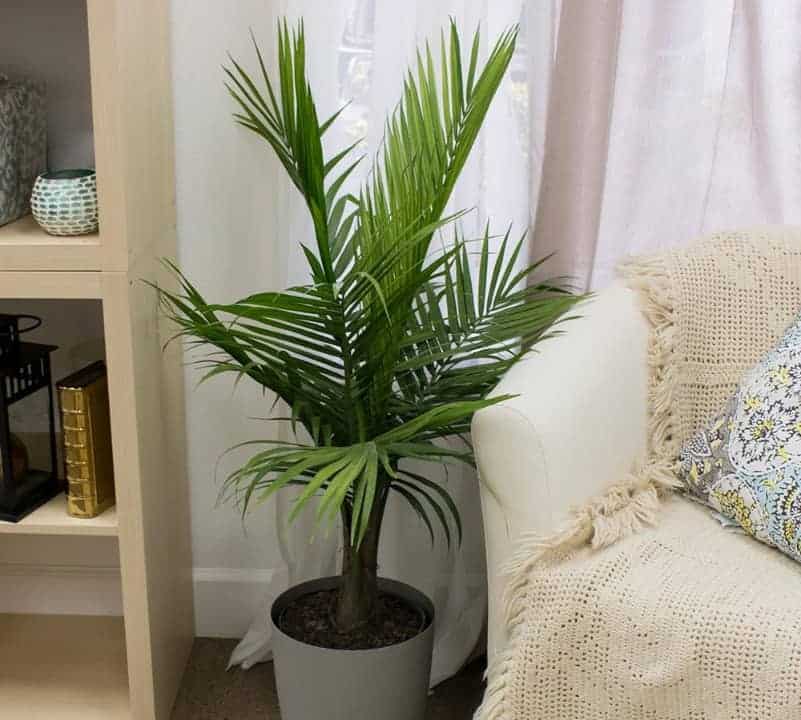

Growing and caring for a home palm
Tropical beauties are unpretentious in the content, however, there are some nuances that should be remembered and taken into account when growing them. First of all, the time of their acquisition, which should fall on spring or summer, when it is easier for them to get used to and get used to the conditions of a new house.
One of the problems of flower growers is transplantation. A certain difficulty is that it is more difficult for large specimens to buy components for the substrate. The soil mixture that is sold in most flower shops is designed for young plants no more than 2 years old or only grown from seedlings. For adult palms, the soil must be made heavier by adding sod soil and humus from leaves that are not on sale.
For young palms, a substrate is made up of the following components, taken in equal volumes:
- high-moor peat;
- turf land;
- leaf humus;
- sand.
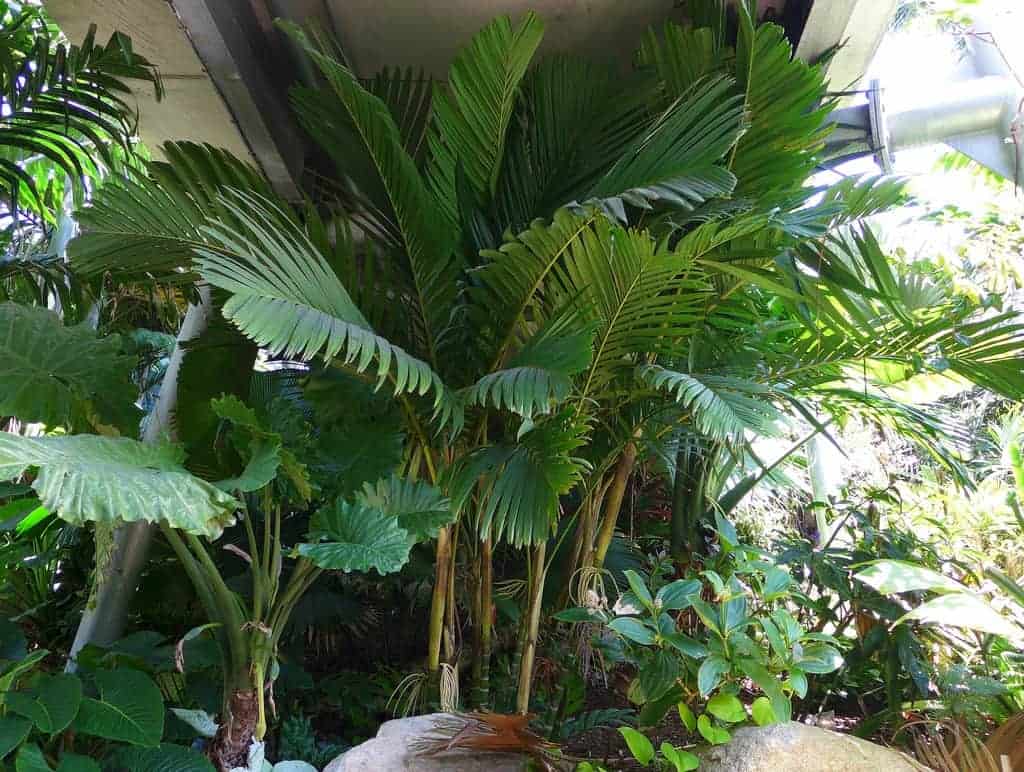

For large-sized ones, 3 volumes of soddy-clayey land, mixed in equal proportion with leaf humus, and 1 volume of coarse-grained river sand and high peat are taken as a basis. The optimal period for transplanting a home palm is from the second decade of April to mid-summer.
Plants transplanted according to the basic rules do not feed at all in the first year, however, this does not apply to those palms that are transferred to a new flower vessel by transshipment. They, like other indoor palm plants, are fertilized with a special mineral complex during active development.
Water the home palm moderately throughout the year. She does not like either overdrying the substrate or overflow, she responds very gratefully to spraying.
Attention! The drain hole should be inspected regularly. Very often, overgrown roots clog it, and water stagnates in the pot, which is fraught with a deterioration in the condition of the plant and the appearance of diseases.
How to water properly
A well-regulated irrigation regime is half the success of growing a home palm.The plant, like no other, reacts sharply to excess moisture and its lack. But air humidity is even more important.
All palms, without exception, even those that come from arid regions, are hygrophilous. Therefore, it is necessary to water the plants almost every day in summer, less often in winter; it is necessary to focus on the dry air. However, stagnant water in the pan is harmful to the roots, the excess must be drained, except for conditions with increased dry air and high temperatures in the room - more than 22-25 degrees. They try to keep the earthen lump constantly wet, but not wet. In winter, in cool apartments, they water less often or alternate moistening the earthy coma with spraying.
Before watering, the top layer of the potting medium must be dry. Few palm species native to swampy regions like the constant moisture in the pallet. But most of the representatives of palm trees are not indifferent to spraying and a warm soul. A substitute for these procedures can be daily wiping with a damp, clean cloth on the surface of the leaves.
Watering is recommended in the morning and not in the afternoon or evening. Water for humidification is used soft and in no case colder than the temperature in the room, it is better to adhere to constant indicators of 35-40 degrees.
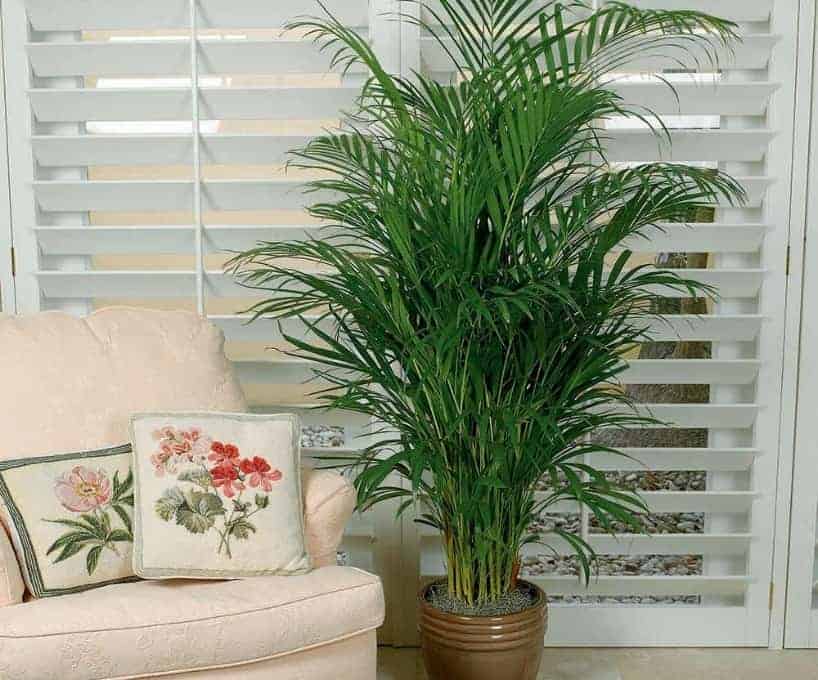

Reproduction of indoor palms: possible options
Domestic palms are propagated vegetatively and by seed.
Simpler vegetative propagation, which involves the separation of lateral or root suckers, or the separation of bush forms into several plants. Different in appearance, leaf shape and size, palms have one important feature: the entire crown of a palm tree grows from a single growth bud at the top of the stem. If you cut off the top, the indoor palm will die.
False palms are propagated, in addition to the methods mentioned, also by cuttings and layering. It is comparatively more difficult to propagate palms by seeds, which very quickly lose their germination. When purchasing planting material in a store, it is difficult to predict the result in advance.
Sowings sprout in 20-30 days, but those seeds that have been stored for more than 2 years germinate within 2-4 months, if their viability is preserved. Experienced owners of tropican women advise soaking the seeds in warm water (about 30-35 degrees above zero) for 3-4 days on the eve of planting, or lightly sawing off the hard shell.
Seeds germinate under the condition of heating the soil, covered with a film on top. Germination temperature is 20-22 degrees Celsius, for subtropical species - about 28-30 degrees. Seedlings with one real leaf, 8-10 cm in size, can already be transplanted into a separate pot filled with a soil mixture of 3 volumes of sod land, 1 volume of sand and 2 volumes of humus and leaf soil taken. The first year, seedlings are kept in much warmer rooms than adult specimens.


Content
- How to choose a home palm
- Rules for caring for a home palm
- About signs of disease in the domestic palm tree
- About pests
It is unlikely that today you can meet a person who would not be surprised by a palm tree. This fabulous beauty can only be overlooked by people who constantly live in the tropics. Of course, they see a palm tree every day and their perception becomes dulled. But you and I, not used to palm trees, would like to have it at home. And now it is not difficult - palm trees are sold in all flower shops. But you should not rush to buy - after all, you do not know how to care for a home palm, and even when buying something you need to know.


How to care for a home palm
Diseases and pests of domestic palms
Most of the problems with changing the appearance of indoor palms are associated with improper care - insufficient or excessive watering, dry air in the room, cold floor on which large-sized trees are placed, draft, and also from touching a cold window.
Palm leaves with brown tips, the same color spots, yellowing - all this is caused by mistakes in care and looks extremely undecorative.
It is important! Damaged leaf areas should be cut to living tissue, leaving at least a narrow strip of dead leaf blade, otherwise the leaf will die further.
Damage to the root system is evidenced by the brown-green tint of the leaves, premature unfolding of the young leaf. It is almost impossible to save a plant with a rotten root system.
Among the diseases of parasitic origin are called bacterial infections, viruses and fungi. The latter cause many diseases that are difficult to fight - gray rot, powdery mildew, rust, leaf spot. The use of fungicides does not always give the expected result.
Dangerous pests of palm trees are scale insects, aphids, mealybugs, thrips, spider mites and whiteflies. Against the parasitic fauna, repeated treatments with chemical agents are used - acaricides and systemic insecticides.
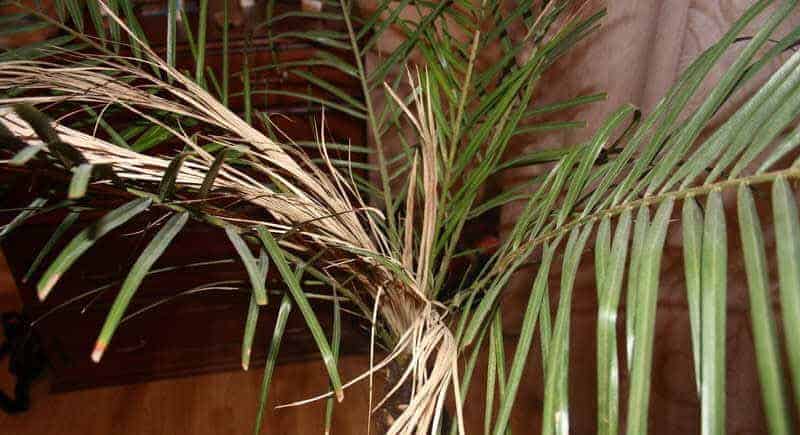

Plant pests, or why palm leaves dry
Fighting a plant parasite is always more difficult than preventing its appearance. Both pests and diseases are always observed more likely on weakened green pets than on healthy and strong immunity.
On palms there are scale insects, mealybugs, aphids, thrips and spider mites, less often they can be seen on the underside of whitefly foliage. With the appearance of mites, the foliage turns yellow and dries very quickly. Many pests can be avoided by regularly washing the leaves with water. Neither ticks, nor scale insects, nor scale insects like such procedures. For prevention, you can wash the plant with soapy water once a month.
If pest colonies have increased as a result of lost time, appropriate chemicals are used, which are used to treat the affected plant repeatedly.
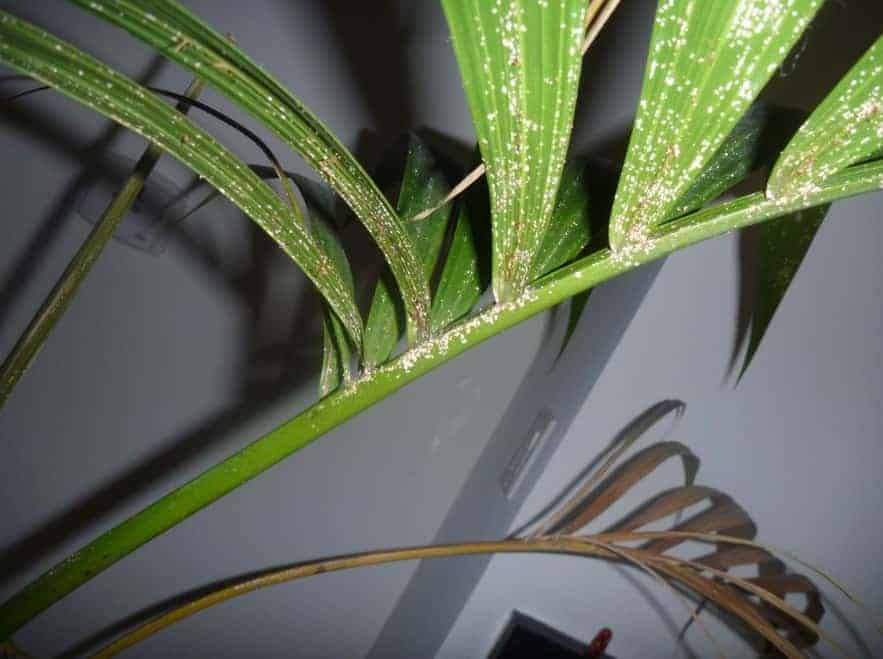

Not grown in rooms
Many remain unknown in indoor floriculture for many reasons. Most often due to gigantic size or growth characteristics.
- Oilseed the palm tree grows in Africa, reaches 30 meters in height, sheds leaves every two years.
- Serenoa creeping grows in the southern United States and on islands in the Caribbean, this palm tree grows very slowly and most often reaches no more than 2-4 meters, its flowers have a fragrant smell.
- Carnauba or wax grows in South America, has fan leaves forming a lush ball. Several species are known.
- Bismarckia grows in Madagascar, has silvery leaves.
- Pandanus or spiral palm. The leaves on its trunk are arranged in several rows in the form of a spiral.
- Calamus or rattan - the longest plant in the world, the leaves of which grow from the buds on the trunk. Easily clings to trees with thorns at the end of leaves.
Appearance
A succulent plant with a powerful fleshy stem. It contains moisture reserves in case of drought. The trunk is bare, the rosette of foliage is at the crown. This is where the name "palm" came from - brigamia really looks like it.
Leaves are smooth, thin waxy bloom gives gloss. The color is light, the length is about 30 cm. In shape, they are close to cabbage. Old leaves in the lower part of the trunk gradually die off and fall off. Falling leaves are accompanied by the release of white sap.


At home, under normal conditions, the height of the plant is up to three meters. In the cramped conditions of an apartment, it does not exceed a meter. In juvenile specimens, the trunk is smooth and tender. As the lower leaves fall, it coarsens, covered with many scars.
The brigamia flower consists of 5 white or yellow petals. Each inflorescence contains 3-8 flowers. The smell is pleasant, delicate, reminiscent of vanilla. Flowering occurs in early to mid-autumn.
Some information about varieties! Only two types of brigamia are grown - "Rocky" and "Insignis". The difference between the species lies in the shade of the flowers and the texture of the seeds."Rocky" is a sunny yellow shade of flowers and smooth seeds. "Insignis" - very light flowers and rough seeds. The rest of the appearance is practically the same.
Transfer
- It is better to transplant by the transshipment method, so as not to harm the root system of the palm tree. Young specimens need to be transplanted annually in the spring.
- Older palms are replanted after 2-3 years.
- Adult palms over 6 years old are transplanted once every 5 years.
- Sometimes the roots will crawl out to the surface of the pot. In this situation, sphagnum moss is prepared and laid on top of them.
- Older specimens do not need replanting. For them, a partial replacement of soil from the topsoil is used.
- In order not to harm the root system, transplanting of various ages should be carried out using the transshipment method.
How to grow yourself
At home, you can also practice the propagation of palm trees. Ornamental palms need to be grown by sowing fresh seeds, and in some cases by offspring. For germination, a temperature of + 25 ... + 35 ° C is required. Sow them in pots with sawdust, moss and sand. A drainage layer with charcoal particles is placed on the bottom. Seeds germinate within a week or several months (it depends on the species). It is necessary to transplant before the start of active growth, in the spring. It is necessary to handle young palms every year, old ones every few years. During these manipulations, you should be careful with the roots. The pot should be chosen based on the size and shape of the rhizome. If the roots are rising out of the ground, then a tall pot should be chosen. For accelerated development in the spring and summer, it is recommended to use top dressing in the form of organic fertilizers.
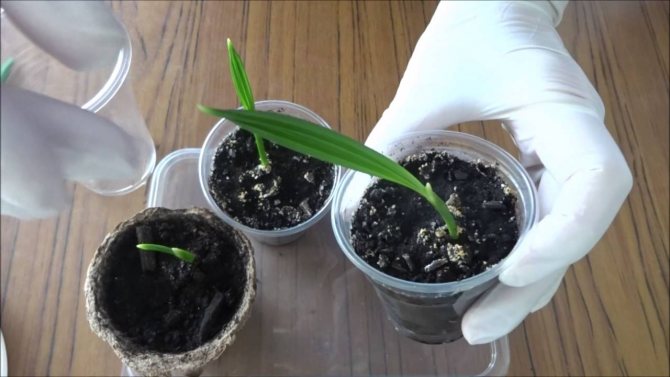

Most palm trees do not tolerate the transplanting process, so it should be done quickly and as rarely as possible.
Distinctive features of palm trees
There are about 2800 species of palm trees on the globe. They differ from most plants in that the leaves grow at the top. However, there are palms whose leaves come from the root bud.
Let's take a closer look at all types with names and photos.
There is the following division of indoor palms, based on the characteristics of the leaves and trunk:
Reed... Some Hamedorei, Rapus. Their stems are thin, tall, like a reed.


Cirrus... Hamedorea elegant, Hovei Forster and Belmora, dates - Roblena and Canary dates, Rafia, Gomuti. These palms have narrow, arched leaves that can be straight and grow upward. The crowns of this group are both soft and hard.
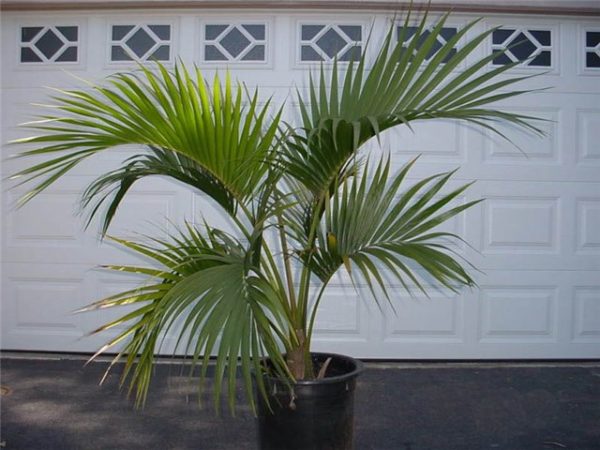

Fan-shaped... Hamerops is squat and tall, Washingtonia, Rapis is tall, Chinese Livistonia. The crowns of such palms are split into many segments extending from the center, and look like a round fan; they grow very large and have thorns on their petioles.
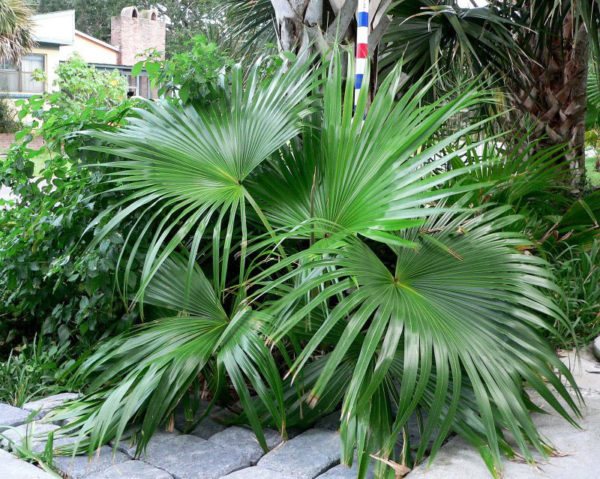

Sago... False, but look like real palms, for decorative purposes only one species is grown - the Cycad turned down, a low plant with a cone-shaped small trunk, from which long feathery leaves diverge.
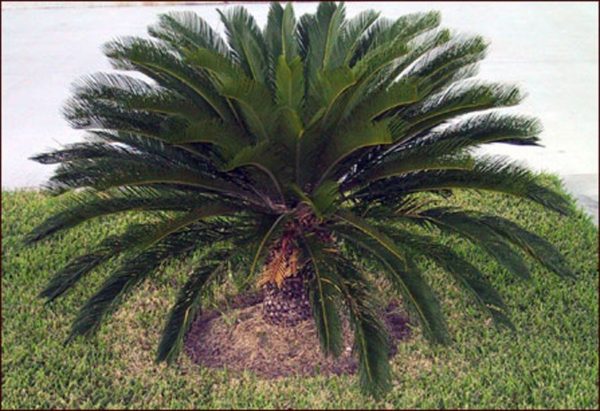

"Fish tail"... This species includes Kariota. The leaves are similar to the tail of a fish - the fin is diamond-shaped or triangular, hence the name, these are one of the fastest growing palms.
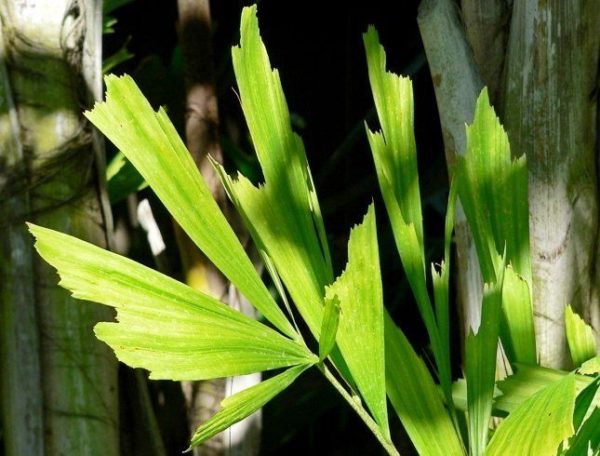

Plants that resemble them in appearance are often mistaken for palms. For example, dracaena and yucca.
Garden
This concept is very arbitrary, since almost all palms can grow in winter gardens and in open plantings, if the climate is favorable for this. There may be limitations only because of the size of the tree, the minimum temperature that it tolerates, and the ability to organize a good shelter for the winter.
Many scientists are working on the development of frost-resistant palm species, because it is a very interesting decorative material for landscape design.
Most often, frost-resistant ones are planted in gardens. Most often it is Trachikarpus and, in places with a warm climate, Bismarckia.
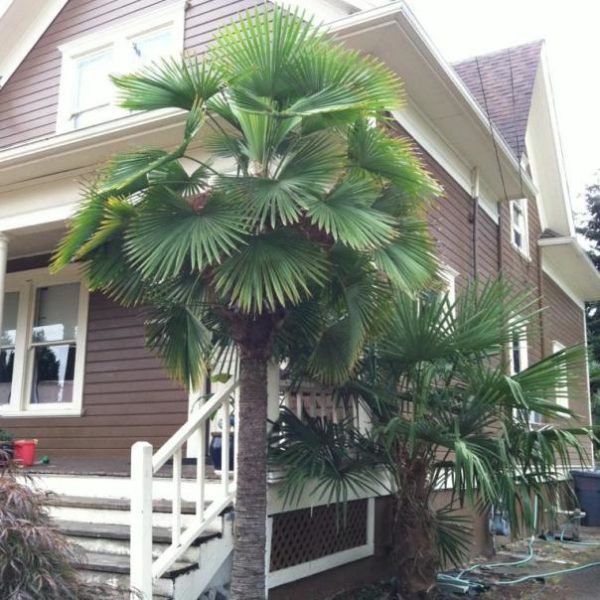

A bit of history and interesting facts
Brigamy was brought to us from the Hawaiian Islands. It grows on steep slopes of volcanic origin. During its existence, the plant has been constantly changing. The transformations led to an increase in the length of the flower up to 15 cm. Difficulties arose with pollination. Only one species of insects pollinated the plant, penetrating with long proboscis into the core of the flower.
The activities of the people who settled on the islands caused the extinction of a rare species of insects. Brigamia, too, was on the brink of extinction. It has been preserved by the activities of scientists aimed at saving endangered species of flora and fauna.
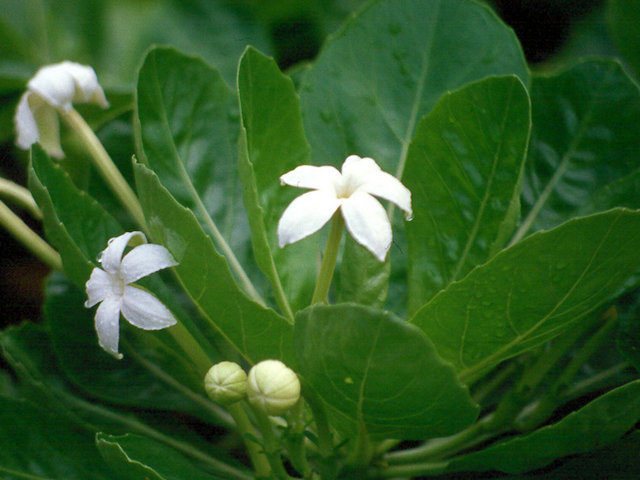

To pollinate a flower in its natural environment, scientists went on expeditions, climbing steep slopes, climbing to great heights. The obtained seeds were used for further selection of a rare exotic flower. A lot of efforts were made to decorate the windowsills of apartments with the Hawaiian palm tree.
Another interesting fact! The seeds of the brigamia were handed over to a specialist in the cultivation and propagation of rare plants. Here varieties of brigamia were bred, adapted for growing in apartments. By the way, the photos of the brigamia do not look so impressive - in "life" she is much more beautiful.
Unsuitable for indoor cultivation
For many reasons, most palms remain unknown in indoor floriculture. Most often this happens due to the gigantic size or the peculiarities of growth. These include:
- Olive, which grows in Africa. The tree reaches a height of 30 m. Once every 2 years, the palm tree sheds its leaves.
- Serenow is creeping. This type of palm grows in the southern United States, as well as on the islands of the Caribbean. The plant grows very slowly, reaching a height of no more than 4 meters. The flowers give off a pleasant smell.
- Wax or Carnauba. Under natural conditions, the plant can be found in South America. The palm tree has disgraced leaves that form a lush scarf. Science knows several species of this plant.
- Bismarck. The plant can be found in Madagascar. Leaves are silvery.
- Pandanus or spiral palm. The leaves on the tree trunk are arranged in several rows, in a spiral.
- Rattan or Calamus palm. This plant is the longest in the world, its leaves grow from the buds on the trunk. Plants easily cling to trees with thorns located at the ends of the leaves.
How to care for an ornamental plant
Palm is an exotic plant that requires sunlight and warmth to grow. Conditions capable of ensuring the rapid growth of a culture must be adapted to natural conditions - those to which it is accustomed to in its natural habitat. In the tropics, it is not only hot, but also humid, so the air around the pot must be humidified from a sprayer 2 times a day. If you do not follow this recommendation, the tips of the lush green leaves will turn black and dry.
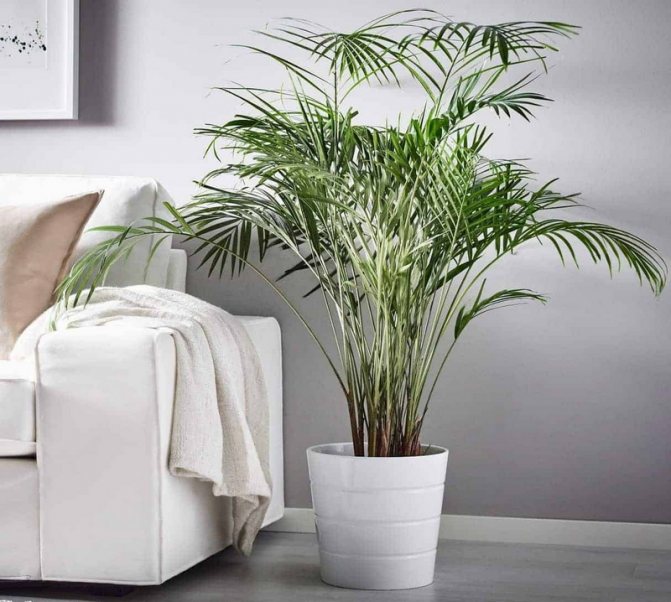

When growing a home plant, you need to follow the general rules for care:
- Lighting. They are very demanding on this parameter. For full development, the length of daylight hours should be at least 8 hours. Palm trees prefer diffused light, it is better to place them near the east or west window. The resulting rays of the southern sun are capable of provoking a burn.
- Watering. It is carried out as the soil dries to a depth of 2/3. Waterlogging of an earthen coma is unacceptable. They react painfully to the bay due to the increased sensitivity of the roots.
- Air humidity. Elevated, tropical crops need regular humidification. It is easy to ensure this requirement, it is enough to place a pallet with liquid next to it or use a special device.
- Temperature. They are sensitive to a drop in temperatures, wherever they grow in nature it is always summer, therefore this indicator will have to be maintained in the limit of 23-30 degrees. The flowerpot must be protected from drafts, hypothermia is detrimental to the roots.
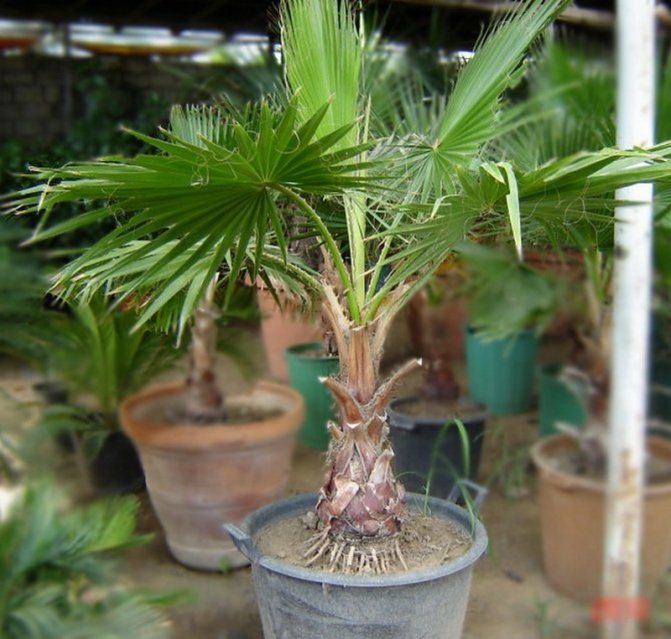

Certain types of domesticated palms require special care, but the rules presented apply to the main varieties. If all the recommendations described are followed, the culture will delight the grower with its beauty.
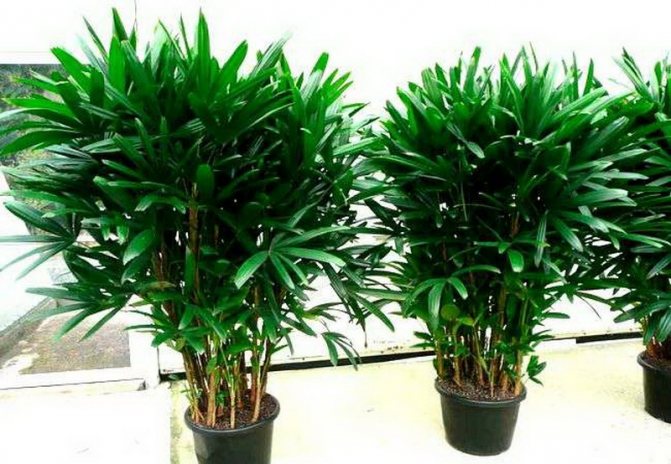

Attention! Considering indoor palm plants, they are often distinguished as unpretentious, but this is a mistake. If the requirements for the content are violated, the culture disappears.


Choosing a palm tree for home breeding
You should not purchase a palm tree from the catalog, as this will not allow you to fully familiarize yourself with the condition of the specimen. In order for the plant to bring joy as long as possible or, at least, not to infect its relatives with flower ailments, it is better to buy it in a specialized store or nursery.
When choosing, you should pay attention to the condition of the flower. The following signs should alert:
- completely or partially dry leaves;
- the presence of an unpleasant musty odor;
- too elongated plant (usually this is due to a lack of sunlight);
- leaf stickiness or growths on them is a sign of a disease;
- abnormal leaf size or violation of the integrity of the leaf surface, which happens due to a deficiency of trace elements.
When buying a flower, it is better to choose a shoot or a small strong specimen - a young plant adapts better to changes in the environment. An adult, having fallen into unfamiliar conditions, can get sick and even die.
Decorative indoor views
Indoor views are not only exotic and greetings from the rainforest, they also fulfill an important detail in the interior, often changing it almost drastically. It should be borne in mind that not all palms are suitable for indoor cultivation. Most often, the following types of indoor palms are chosen for these purposes (with photos and names):
- Date. Date palms are the most common. At the moment, there are more than 17 species, in the wild they grow in Africa and Asia. If you put an ordinary date bone in a pot, it will germinate after a while. These seeds have almost one hundred percent germination, but they germinate for about a month. Literally in 5 years, a young tree will become decorative. It is best to purchase a finger date for this purpose. This species does not grow in the wild. Indoors, it can grow up to 6 m in height. True, this will take several decades. The date palms also include the Robelen date. The fruits of this plant are inedible. Palm trees have a crown with leaves that gracefully curve downward. The trunk of the plant is also original, as if shaggy.
- Areca Chrysalidocarpus. In nature, it grows in Indian forests. The crown is a huge bunch of leaves at the top of the trunks, which reach one meter in length. The trunk is covered with a large number of scars in the form of a ring. The fan of Trachikarpus will look very original in the room. This plant is ideally suited for indoor growing. The culture blooms and bears fruit. But the fastest growing in indoor conditions is Kariota. This plant is markedly different from the rest of the species. Outwardly, it resembles a triangle that stretches upward. Life expectancy is no more than 20 years.
- Washingtonia. This decorative palm tree has a crown in the form of a bright green large fan. The cultivation of this species does not require specific knowledge, the plant is unpretentious to care for.
- Coconut (rubber). This plant will be the hardest to grow indoors. It will take a lot of light to grow. A coconut tree is best suited for placement in a conservatory. In indoor conditions, two types are mainly grown: Weddel coconut and walnut coconut.
- Hamedorea (bamboo, water or cat palm). These species are ideal for indoor cultivation.Hamedorei, one-color, graceful, oblong and tall, are especially ideal for these purposes.
- Liviston. These plants have been grown in indoor culture for several centuries. They are very decorative, small, but they need special conditions to grow successfully.
- Rapis. Unpretentious and slow-growing bushy palms with soft dark green leaves. Ideal for indoor cultivation. They easily endure all the inconveniences: dry air, poor lighting and drafts. Outwardly, they are very similar to Rapis Kentia, which can also be easily grown indoors.
- Hameropsi. These houseplants are widespread, very decorative and unpretentious, grow slowly. Over time, the trunk grows overgrown with brown fibers, the leaves are feathery, with thorns.
One of the most capricious is Butea, but if you find an approach to it, the plant will delight you with a surprisingly graceful crown with feathery leaves.
Rare species include Gioforba. Outwardly, the plant is a small palm tree with peculiar leaves and a trunk that resembles a bottle at the bottom. Another rarity is Sabal, which is home to the subtropics of America. The plant is not tall, the leaves are gray-green, grow on short petioles.
And only passionate palm lovers know about the Bethel variety, which is distinguished by beautiful large trunks and a lush crown. In its natural habitat, the palm grows up to 20 m in height, and also has two-meter leaves. In indoor conditions, it can grow for a long time, but at the same time it has a more modest size.
Benefits of decorating the interior with palm trees
Beautiful appearance is the main quality of the decorative palm tree. It is characterized by a variety of sizes and shapes. These plants are both fast-growing and slow-growing. A low ripening rate makes it possible to grow a large palm tree for some time at home, and before it reaches the size usual for the natural environment, plant it in another place. The rate of development additionally depends on the care and the amount of sunlight received. Each individual subspecies has some kind of ability, which simplifies the choice for those who wish to purchase this plant. You can pick up a beautiful and undemanding palm tree: smooth or thorny, fast-growing, if you need a large plant in a short time, or slow-growing, if the priority is the long-term presence of a palm tree in the interior. Some dwarf species are bred by humans.
Video: features of caring for a room palm
Palm trees are tropical plants that are no longer a curiosity on windowsills. They are appreciated for their lack of special difficulties in growing and the ability to constantly enjoy lush greenery.
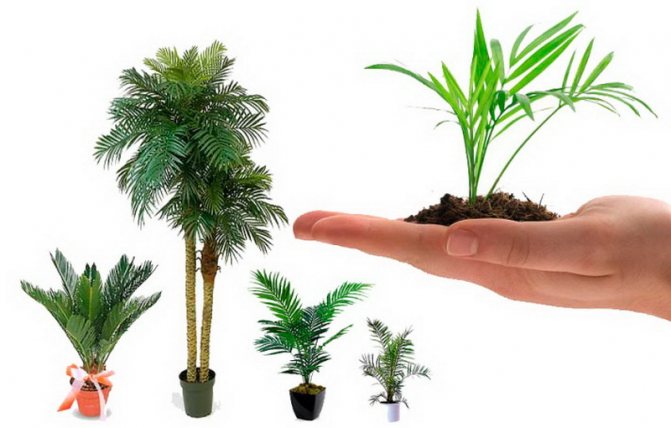

Do not overestimate your capabilities, it is better for a novice florist to choose a common variety. It is easier to buy seeds, they cost less than an adult plant in a flower shop and allow you to get several adapted crops at once. You can buy a culture after making sure that it is possible to arrange conditions for its development.
Fertilizer
Fertilize your palm every one and a half to two months from early spring to late fall to provide the plant with optimal nutrients during the growing season. You can buy a special palm food and add it to the soil.
Keep in mind when choosing a fertilizer that the house palm is extremely sensitive to chemical fertilization. Using them will do more harm than good. It is better to purchase organic mixtures, or do not feed at all.
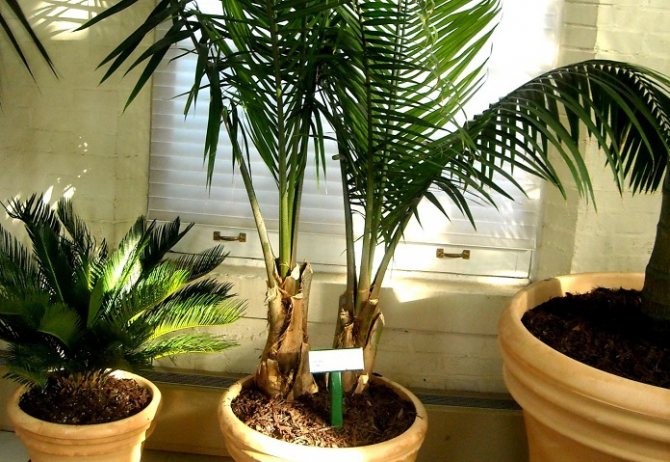

Types of brigamia
Popular varieties:
| Name | Trunk | Leaves | Flowers |
| Wonderful (Great) | Caudex is missing. | Bright or dark green, spoon-shaped, collected in a socket. It is wider at the top than at the base. | Yellow, beige. |
| Rocky | The expansion at the base is in contrast to the brigamia remarkable. | Green, reminiscent of cabbage. | Snow white. |
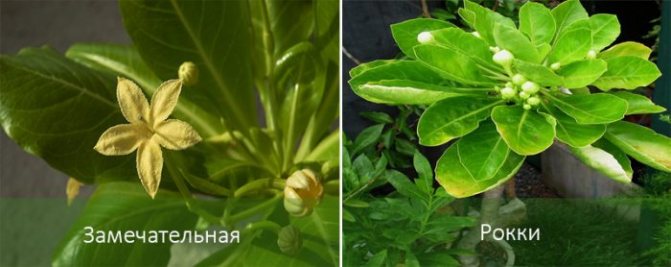

Care rules
The best place to grow palm species is in the greenhouse. Palm trees located in such a room receive a lot of diffused sunlight from different directions. Their appearance will be better than in a regular room. But due to the unpretentiousness of these plants, creating similar conditions in an apartment or house will give the same result. First of all, you need to look at the condition of the foliage plates. If their appearance has changed, then this most likely indicates a deterioration in the health of the palm tree. At home, their leaves can fall off and grow back. Up to three sheets can grow in a year, and more than four can fall off. Thus, the palm tree can be left without foliage and die. Some species, starting from a certain time, are generally unable to grow it. Do not confuse the natural process of discarding leaves due to palm growth and disease due to insufficient care.
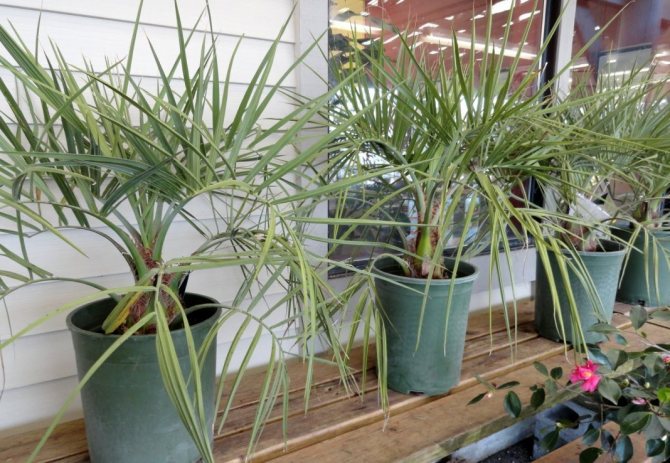

To avoid misunderstandings and properly care for your palm tree, you need to listen to the opinion of experienced gardeners.
Illumination
Only some decorative palms are recommended to be placed in the sun. They should usually be kept away from direct light. From an overabundance of light, the condition of the plant can deteriorate sharply. Also, this factor provokes rapid growth, which can lead to the fact that the palm will have to be transferred to another place. Ideally, plants should receive diffused light. Few palm trees have shade resistance. If the plant is transferred to the street, then you need to choose a place where it is constantly in partial shade. Since most palms are light-loving, it is better to place them on the sides of the window, reliably protecting the top of the crown from direct rays. Before choosing a place for the pot, you need to find out which side the windows face. It is not recommended to put palms on the south, southwest and southeast side. This recommendation does not apply to the most light-loving palms.
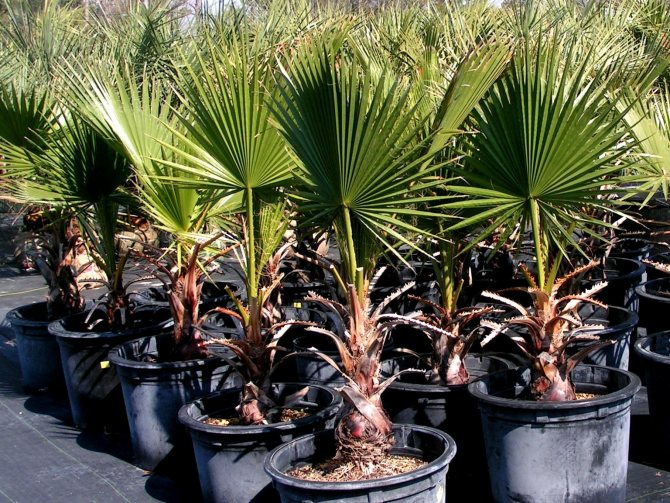

Temperature regime
Despite the fact that in their natural habitat palm trees grow at high temperatures in summer and in cool / hot climates in winter, home care provides for maintenance at a temperature not higher than +25 ° C. The reason is that even in nature, palm trees tend to sheltered from the sun. In the summer, the plants should be in a warmer environment, and for the winter they should be transferred to a cool place (verandas, courtyards). Heat-loving palms should winter at + 13 ... + 16 ° С, and frost-hardy ones - at temperatures from +8 ° С to +11 ° С. Do not forget about the ratio of temperature indicators and air humidity. In a room with high humidity, a feeling of warmth and a feeling of coolness will increase, depending on the temperature. If the room, on the other hand, is too dry, then these conditions will be perceived in the same way.


Air humidity and watering
Palm trees are hydrophilic plants. Their location in the natural environment directly depends on the availability of a source of moisture. But almost all species, including palms growing in dry areas of the Earth, can survive for a long time without water. For full development, you need to keep the humidity at 70% and higher, as far as the type of room allows. A container with water can be placed near the plant. Water the palm trees carefully so as not to provoke a deterioration in the condition of the roots. In summer, watering should be more abundant and more frequent, especially in hot weather. In winter, the soil should be kept slightly damp, but not wet. If there is a lot of water in the ground or it forms accumulations, then the condition of the palm tree can deteriorate sharply. Watering your plants with good quality water is essential, but doing so with distilled water can be dangerous. Some types of leaves are recommended to be kept dry and wiped as little as possible. For irrigation, you need cool water with a temperature of at least +20 ° C.
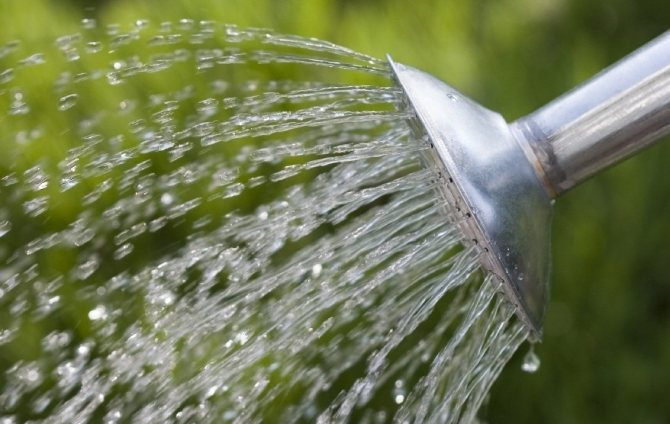

Conditions for growth in an apartment
To grow various types of palm trees at home, it is necessary to create conditions similar to those found in the homeland of plants. Tropical and subtropical palms differ slightly in care, but it is perfectly acceptable to keep them in the same apartment.
The most correct place for palm trees is a greenhouse or winter garden, which is unlikely in an apartment or even a private house. Usually this is an unheated room, the temperature in which naturally decreases before the cold weather begins. This is very fond of subtropical plants.
Lighting
For the synthesis of chlorophyll in large palm leaves, all plants, without exception, need bright light. The best place is near a window on the west or east side. Near the south window, the culture will have to be shaded with a transparent curtain (not a curtain) so that the sun's rays do not burn the foliage.
It is better not to put the plant in a dark corner - there it is guaranteed to wither away.


Temperature regime
Exotic plants do well at temperatures up to 25 - 27 degrees. If in summer the thermometer rises higher, the palm tree in the pot must be bathed and sprayed several times a day - this cools the foliage.
All plants of this type do not like to be in a draft and on a cold concrete floor, therefore, felt or other insulation is placed under the bottom on an unheated balcony.
Requirements for the composition of the soil
The composition of the soil should be nutritious - almost all palm (not false species) fruit bearing plants. They bloom in nature and consume a huge amount of nutrients for this. If there is not enough nitrogen, potassium and phosphorus, the root system will develop poorly, while the top will not have enough trace elements for growth.
Add to the soil mixture:
- Clay - it holds trace elements well, preventing them from flowing into the pan.
- Peat - can be halved and lowland. Horse for looseness, low-lying for nutrition, as it contains a large amount of humic acids, useful for growth.
- Humus or rotted mullein. It serves for soil restoration.
- Charcoal is also a top dressing, but has bactericidal properties, prevents the growth of fungal spores.
- Sand - for looseness, so that the roots can breathe and grow freely.
Video: Date palm care
Drainage is laid out at the bottom - it removes excess liquid. Not all palms have shallow root systems. For example, the date grows well in a deep pot. If you plant it in a wide bowl, growth will stop.
Watering and feeding
Large plants that grow quickly are replanted once a year, but the soil still lacks nutrients to stimulate new leaf formation. Therefore, the plants are fed throughout the growing season. If the flower grows on the street, it will need weekly fertilization with complex mixtures. Feeding palms at home is carried out twice a month with watering.
There are special fertilizers for palm crops, but nitrogen can be applied separately in the spring with phosphorus, potassium with phosphorus closer to the expected flowering period and in the fall.
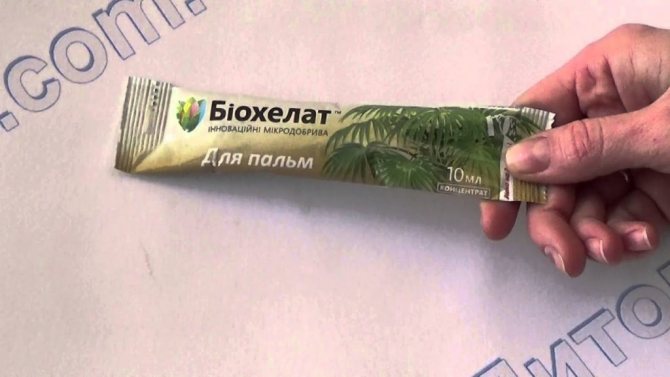

Watering is best done so that the soil is constantly slightly moist. If a plant of an unknown species got into the apartment, and no one knows how to care for it, you need to pay attention:
- If the trunk is thick, then it does not need frequent watering. On the contrary, it can rot with an excess of liquid.
- If the leaves are dark green, then a lot of water is also not needed. Light, then more.
The drooping leaves indicate that the palm tree needs to be exposed to light and more water. So, observing the plant, you can understand its needs and adjust the care at home. If the leaves dry at the edges or the flower does not grow new leaves, it needs fertilization.
Pot selection
- When choosing a pot for palm trees, one should not forget about the features of the material.
For example, if you take a ceramic flowerpot that is not glazed inside, then in hot weather you will have to water the plant more often.Since the material of the pot also absorbs moisture. - If we talk about the color of the flowerpot, then dark colors attract heat, and, therefore, an earthen lump and, finally, roots will warm up. What has a negative effect on the plant can lead to a state of stagnation and even death.
- The pot for palm trees in height should be larger than the diameter
The shape of the flowerpot should be with a certain proportion. The diameter is chosen less than its height. - Volume. The pot is selected according to the size of the palm tree. Large pots are not suitable for a small process at once. It is worth increasing as the seedling grows and each subsequent flowerpot should be more by a third of the previous one.
- The container must be equipped with an opening for draining excess liquid.
- For seed propagation, the first container is 200 ml, the second is 0.5 ml, the third is 0.7-1 liter, etc.
- Too large volumes lead to root rot and death of the plant.
- A tight pot will stop the growth of the palm tree.
Growing conditions at home
To succeed in growing indoor palms, you need to know in what conditions they grow in nature and try to recreate them at home as much as possible.
The most luxurious specimens grow when they are from all sides enough natural light... It is difficult to create such greenhouse conditions in a city apartment. But there are plants, for example, common Hovea and Hamedoreathat have adapted to penumbra.
Since a palm tree is a plant of a humid climate, in indoor conditions they need daily spraying, otherwise, sooner or later, the process of leaf dying off will begin.
Plants should protect from drafts and sudden changes in air temperature... In summer they will be comfortable at 18-22 ° C, in winter they will be cool at a temperature of 10-15 ° C.
Soil for palm should not be too loose. Lightweight commercial substrate is more suitable for young plants. For adult palms, it is better to cook it yourself by mixing 2 parts of garden soil, humus and peat with 1 part of sand.
Description and characteristics
The Hawaiian Islands are home to the plant. It grows mainly on the slopes of volcanoes. For a million years, the plant has never changed its appearance. Only its flowers have increased, which have grown by as much as fifteen centimeters.
Due to the fact that people destroyed the insects that pollinated this plant, it became under the threat of complete extinction. This period lasted for about twenty years. The situation was resolved by local scientists who pollinated the plant on their own. At the same time, they had to climb to a height of more than one kilometer above the sea.
Difficulties of content
When the plant begins to bloom, then the brigamia should in no case be transplanted or moved from place to place. Otherwise, all the leaves will fall off along with the buds. In the fall, the plant needs twelve hours of lighting. Since brigamia belongs to indoor plants, it can become an unusual decoration in stone gardens or greenhouses.
In Hawaii, locals use brigamia leaf juice as a healing or decontamination agent. In order for the plant to fully grow and develop, it needs to be given proper care.
If you find an error, please select a piece of text and press Ctrl + Enter.


